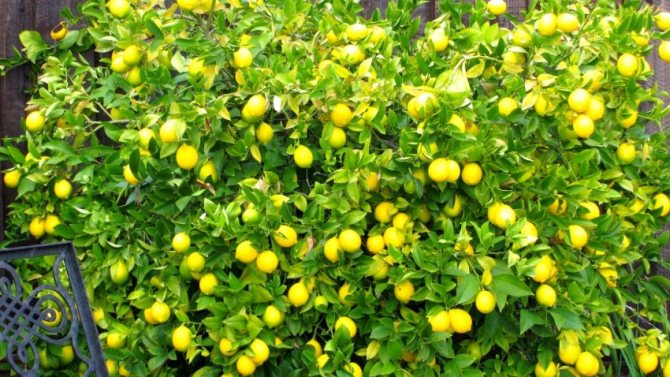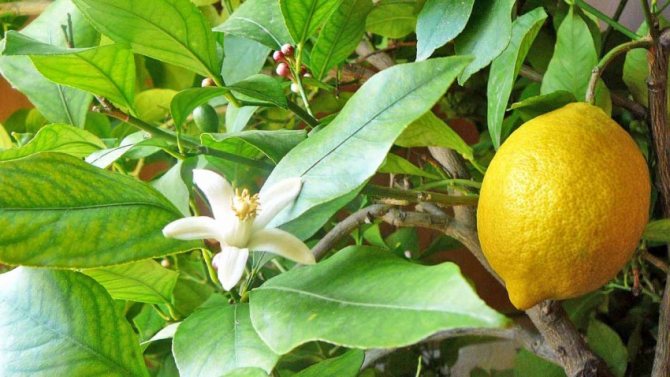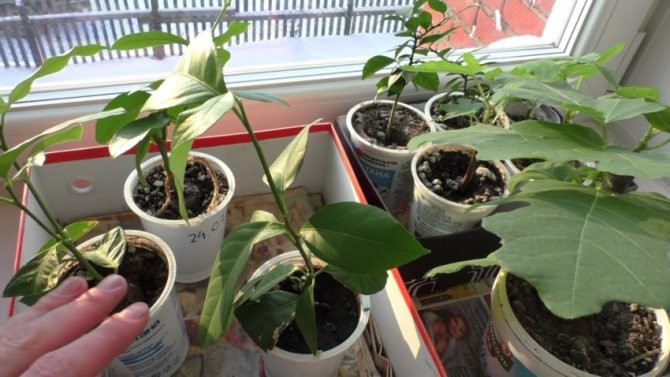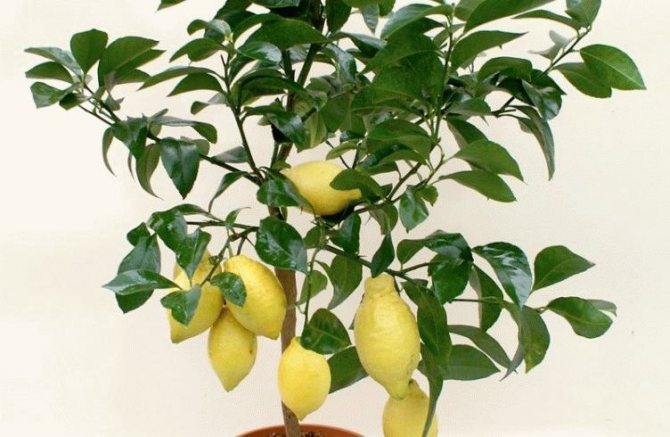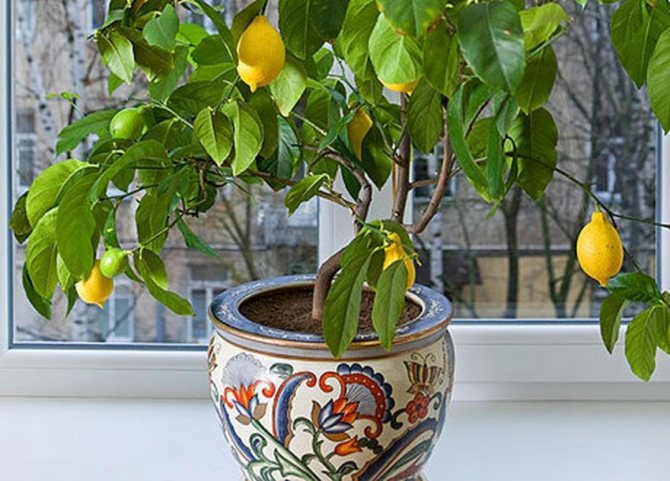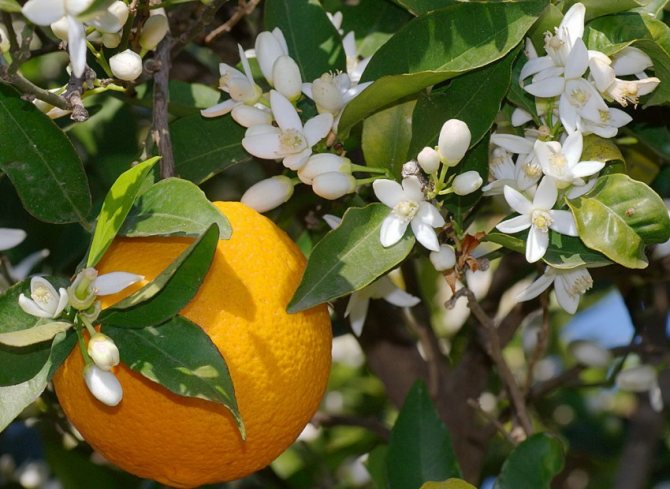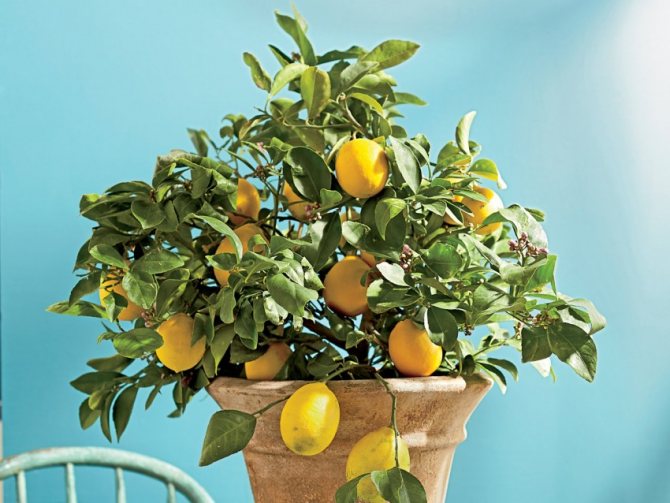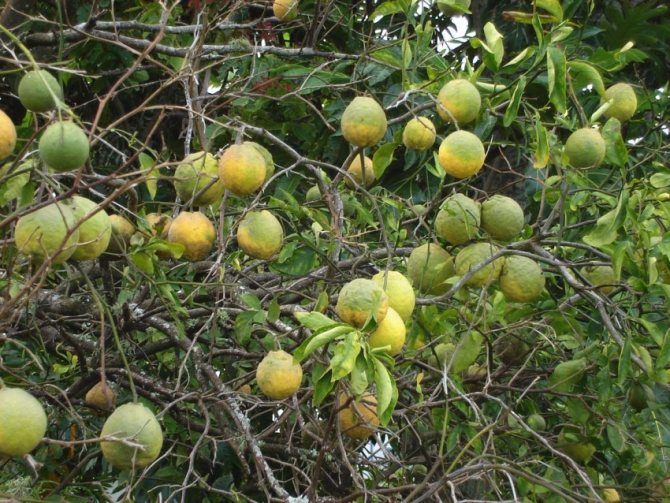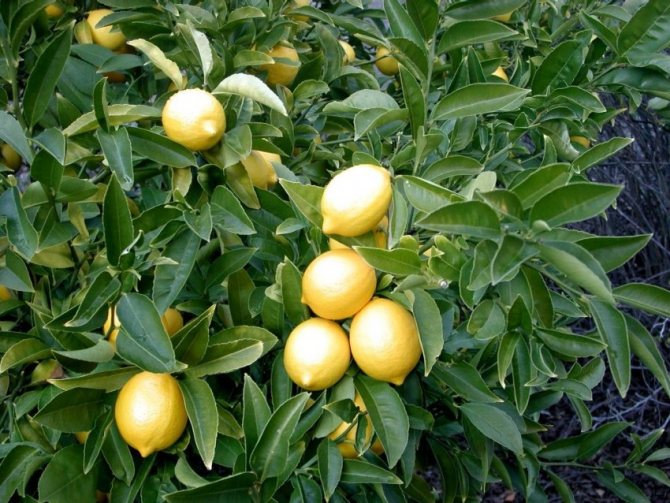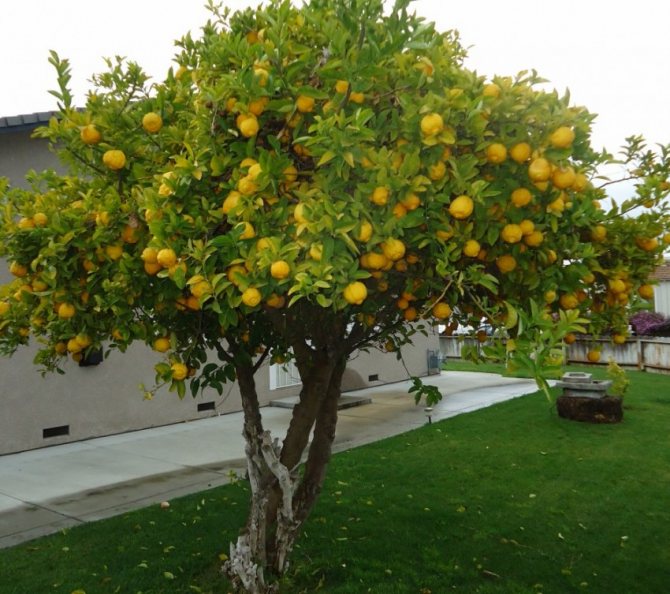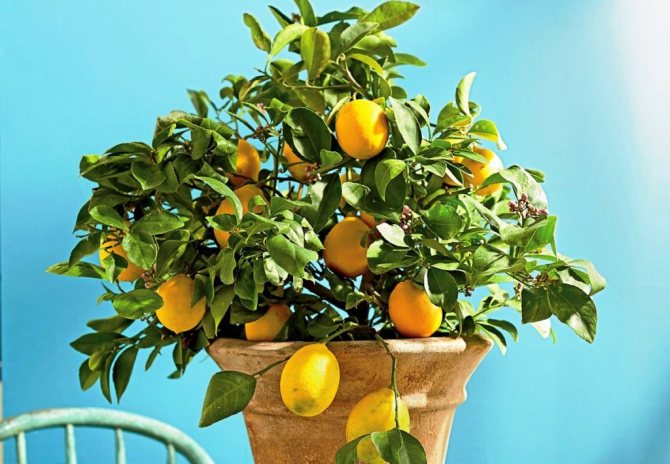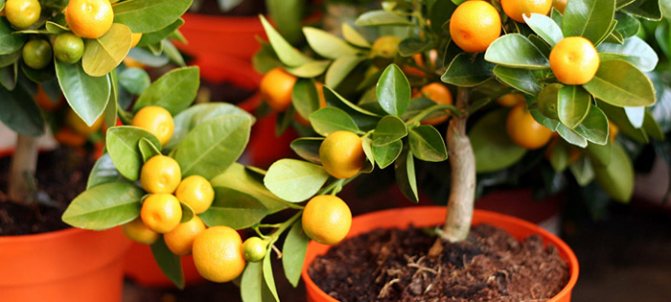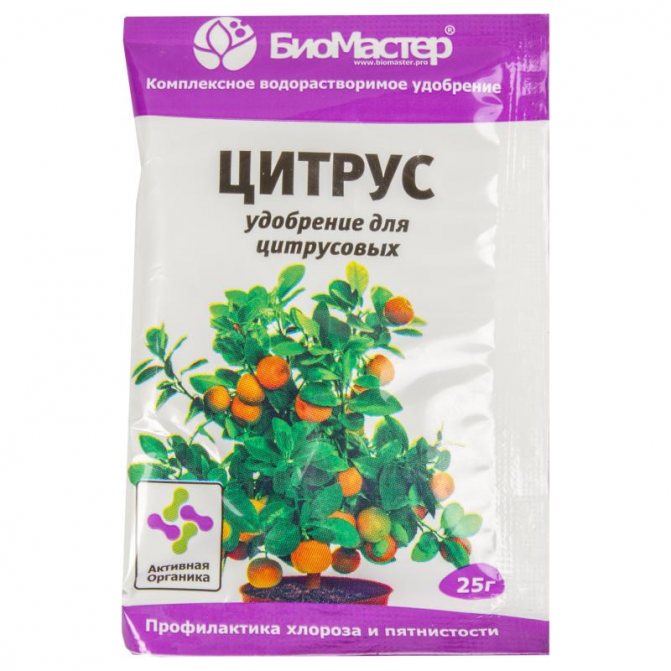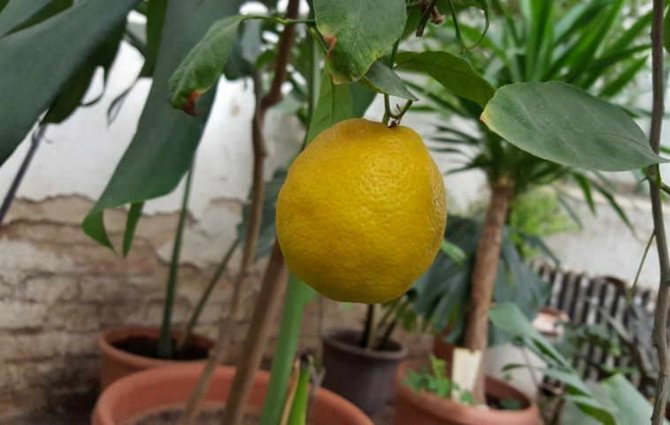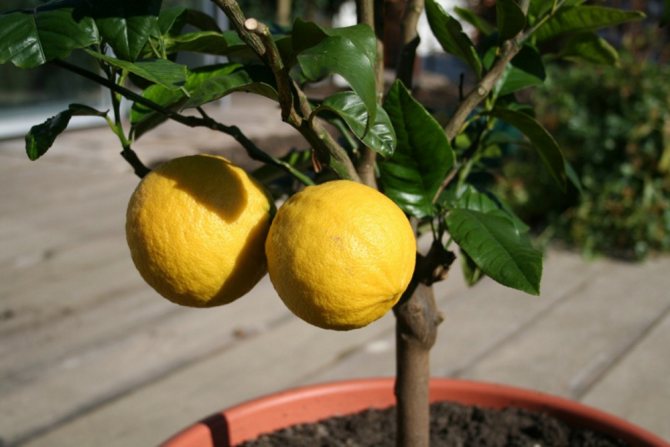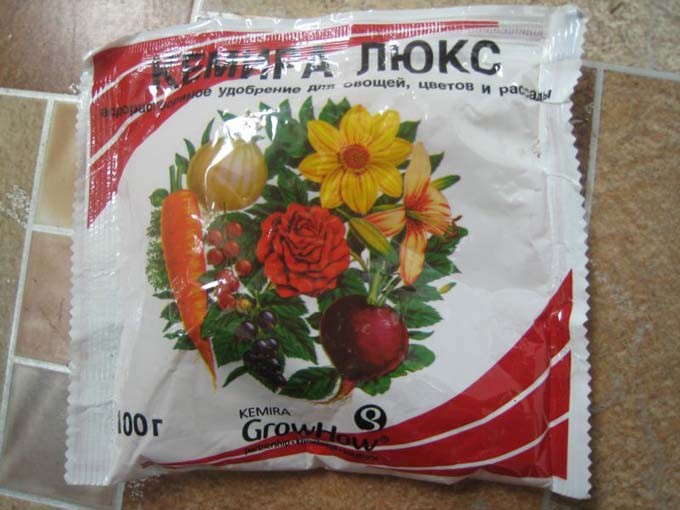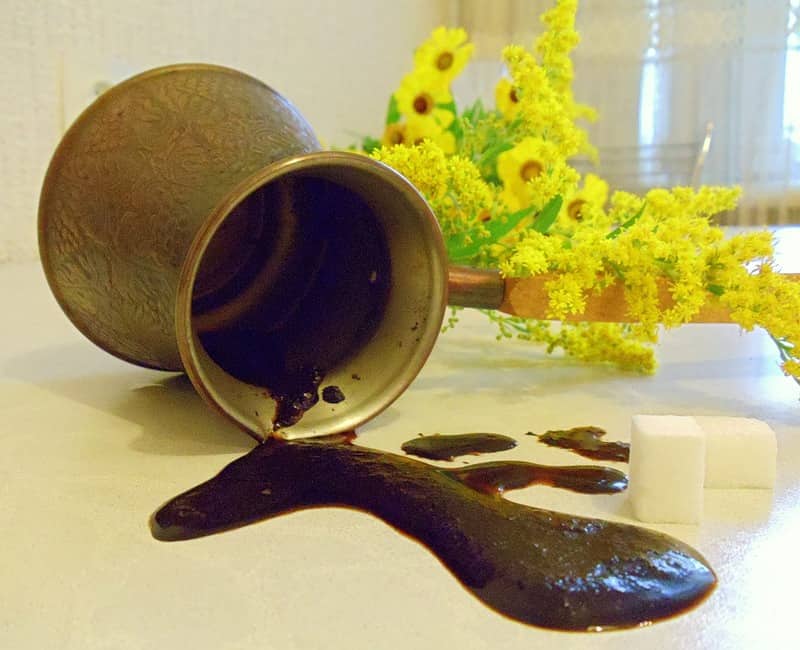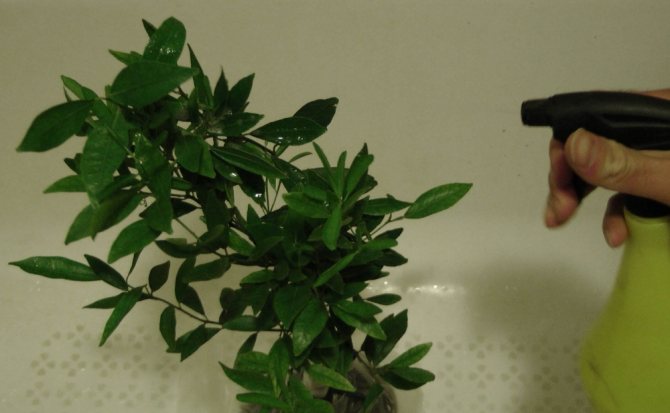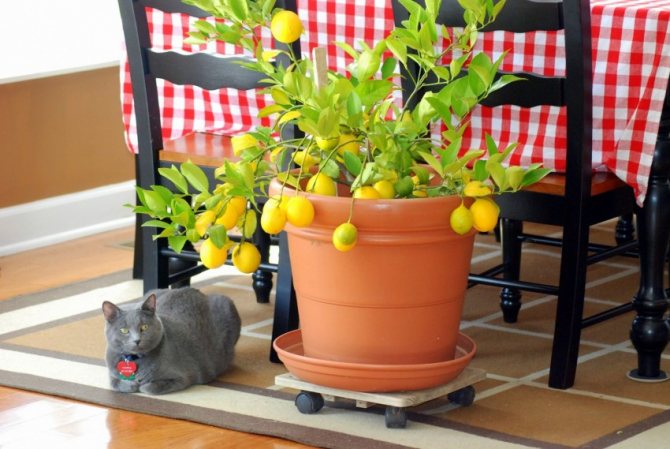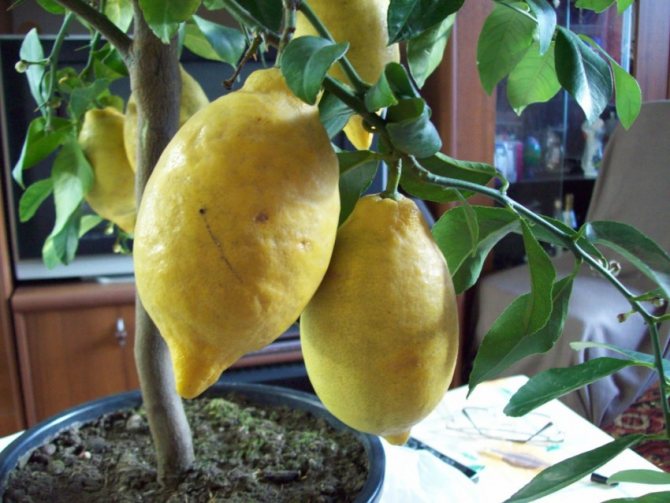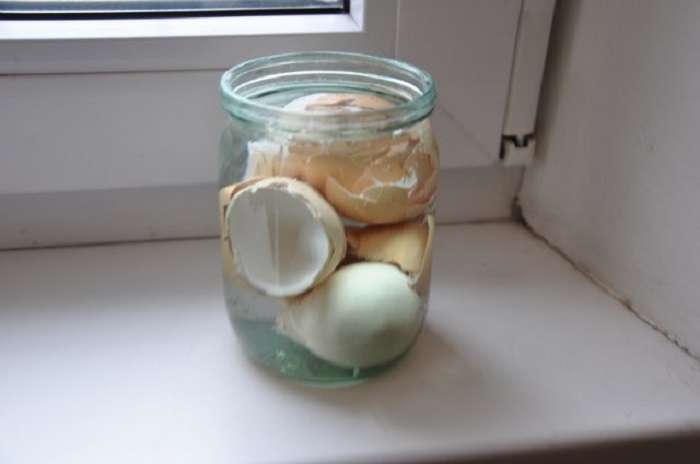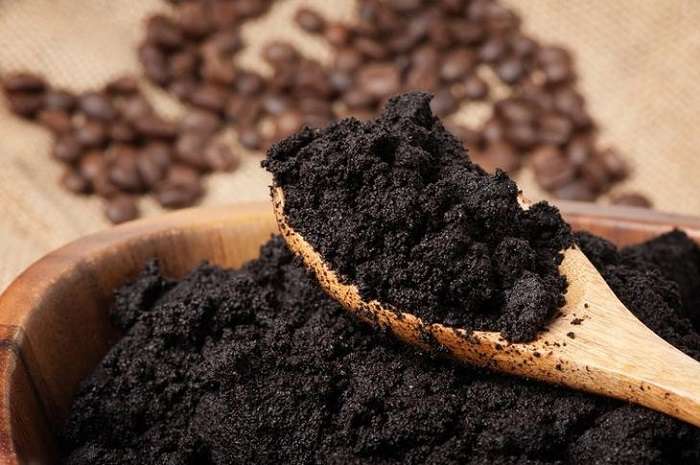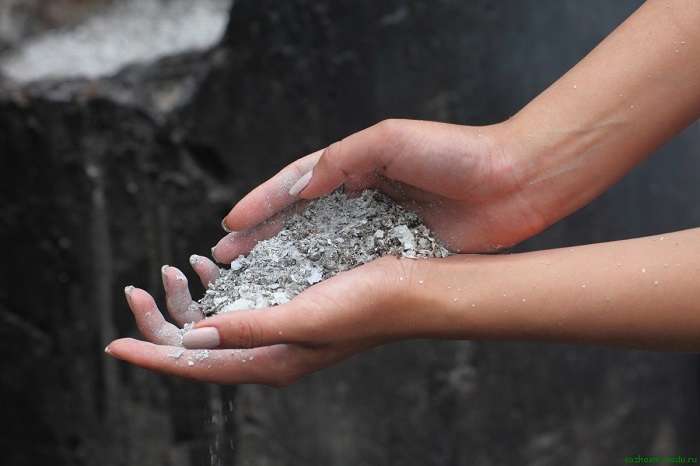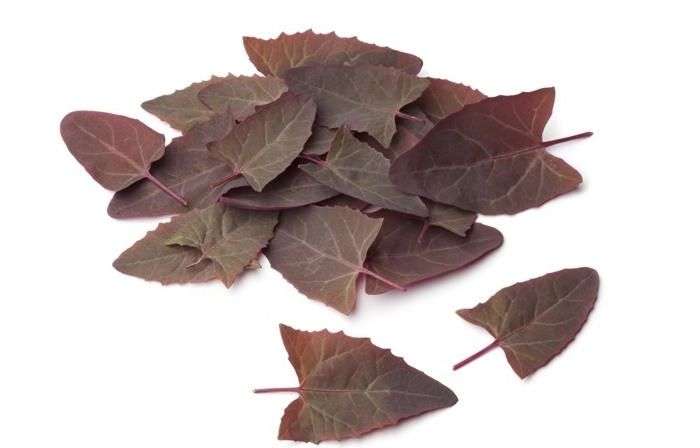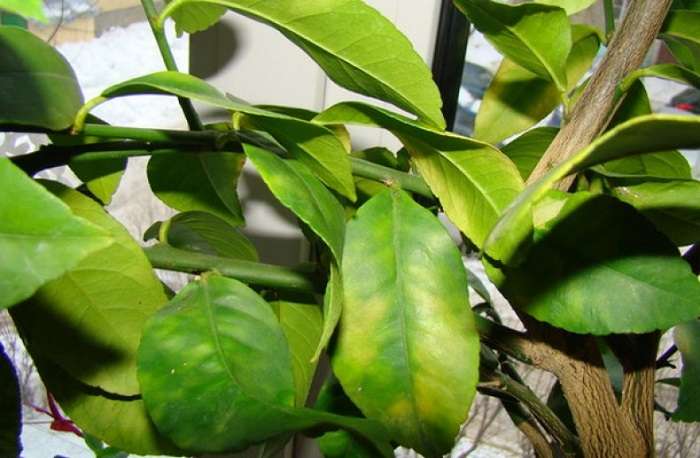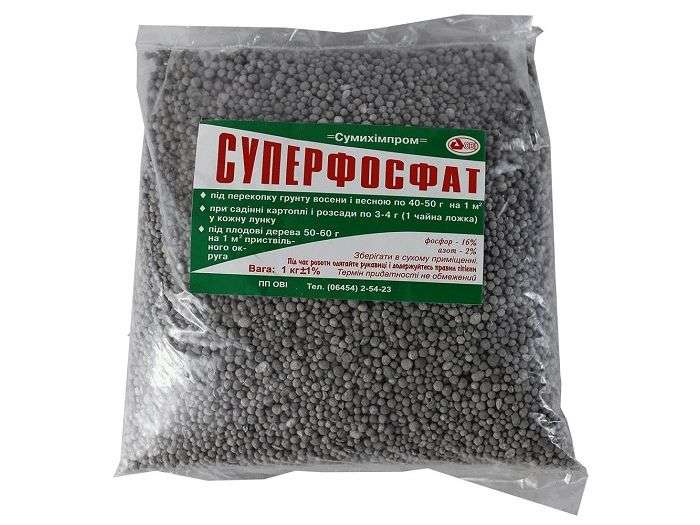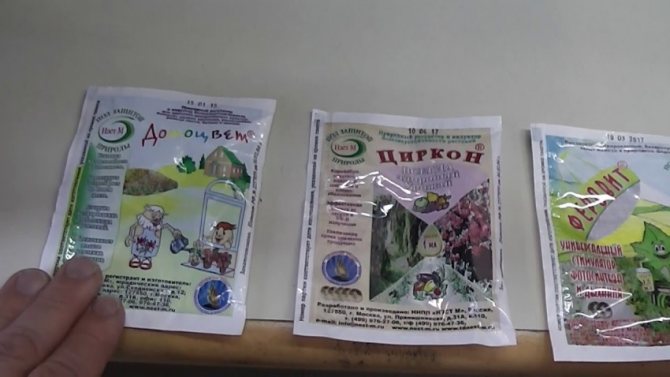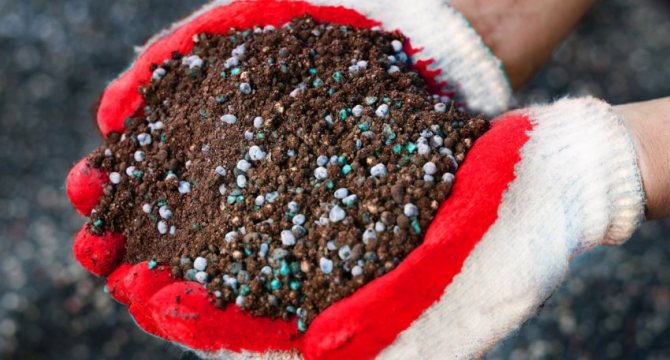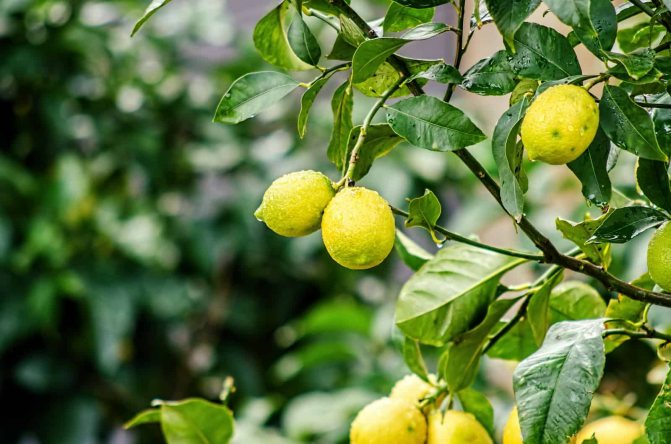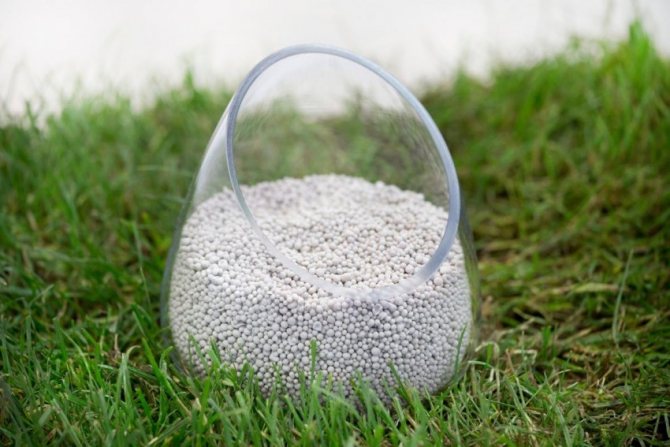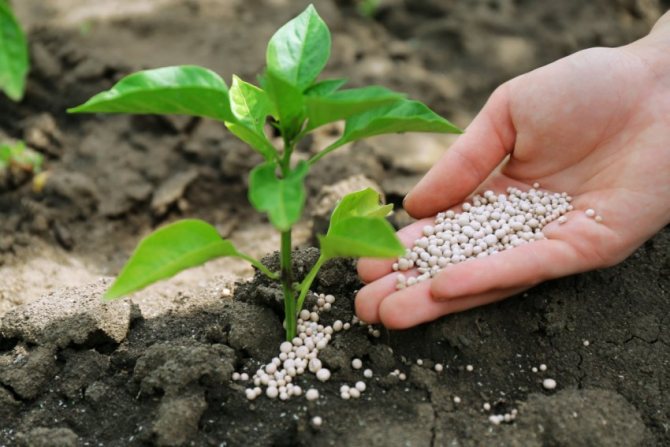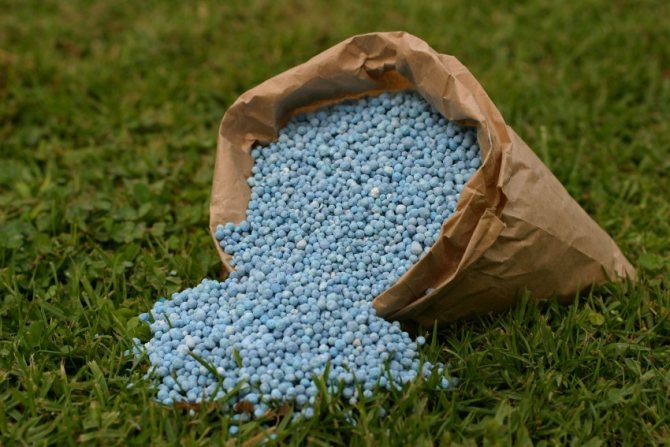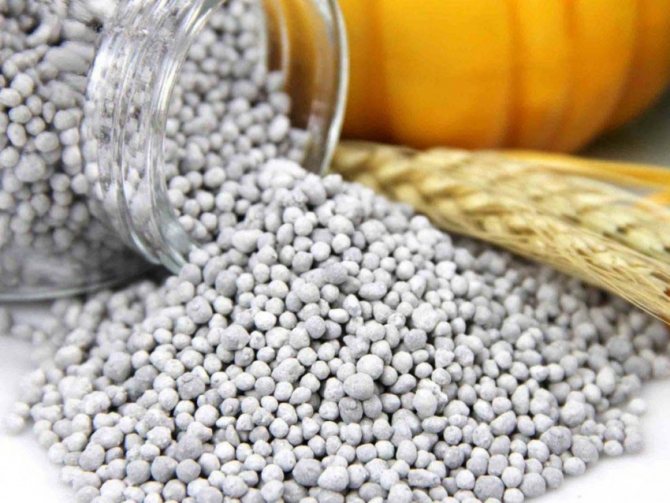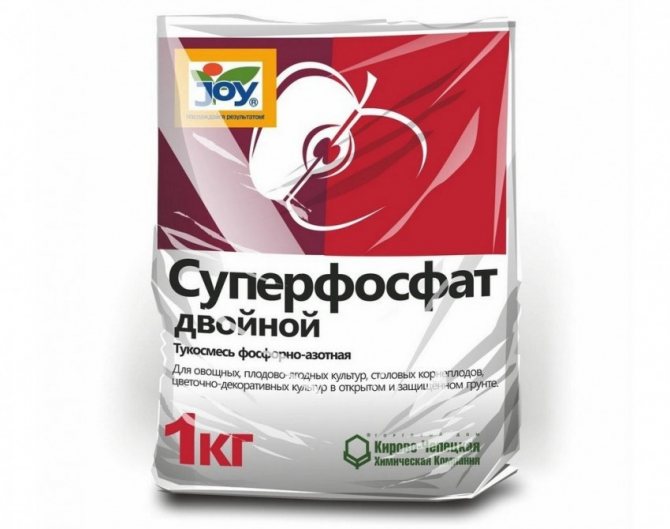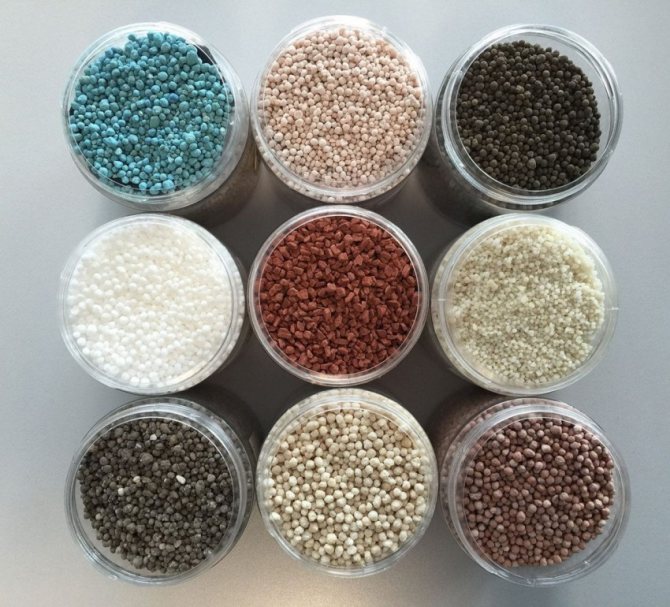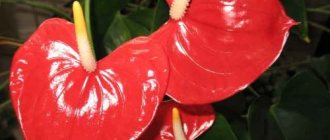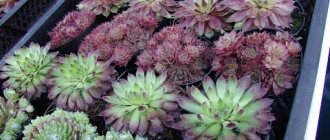It is necessary to feed a lemon growing at home, since only in this case its normal development, flowering and further fruiting is guaranteed.
The need for organic and mineral components is constantly felt by the tree - this is due to the limited space of the pot.
However, it is important to know in what proportions to apply fertilizers and which compositions to use, so as not to harm the culture and not destroy even a strong specimen.
We will tell you how to feed lemon at home.
Why should a lemon be fed?
The feeding area of the lemon growing on the windowsill is limited by the size of the pot. It completely depletes the soil in about 1.5-2 months. The root system cannot penetrate into the deep layers of the soil in order to extract a new batch of nutrients. Therefore, the elements necessary for development must constantly come from outside.
Also, indoor lemons do not have a clear division into flowering and fruiting periods. One plant contains flowers, ovaries and ripe fruits at the same time. To ensure their development, the soil should be systematically fertilized. When a tree does not have enough nutrients, symptoms of starvation appear - inhibition of development, dropping of ovaries, deterioration of the taste characteristics of fruits.
Top dressing indoor lemon in winter and summer
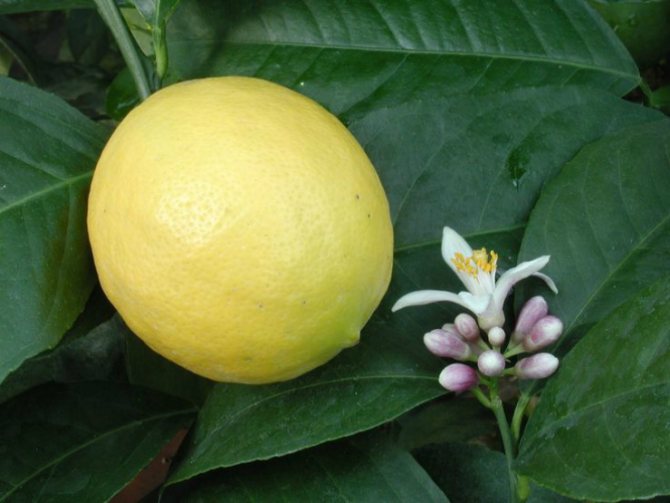
From November to February, the lemon is dormant and does not require frequent feeding. However, in winter, indoor lemon also experiences severe stress due to lack of light, dry air and drafts.
In cold months, the plant is watered once a month with a solution of a complex mineral fertilizer with microelements (no more than 1-2 grams of granules per liter of water). It is also useful to do monthly foliar feeding with a slightly pink solution of potassium permanganate.
With the lengthening of daylight hours, the plant begins to actively start up new leaves and twigs - which means it's time to switch to the summer feeding regime. From February to March, indoor lemons are fed at least three times a month, that is, every 10 days.
Signs of a lack of nutrition
To fully develop, lemon, like other crops, requires significant doses of NPK macronutrients (nitrogen, phosphorus, potassium) in a ratio of 3: 1: 1. To a lesser extent, it absorbs sulfur, iron, boron, copper, zinc and other trace elements. Their level in plants and soil is insignificant, but the physiological role is extremely high. They are involved in the main life processes, affect the yield and quality of fruits.
Nutritional deficiencies are easy to spot by looking closely at a lemon. External signs of a deficiency:
- nitrogen - growth slows down, young leaves become smaller, turn pale, old ones turn yellow and die off. The stems become fragile, the number of fruits decreases;
- phosphorus - the normal course of metabolic processes is disrupted, due to which the greens grow dull, growth is delayed, few flowers and ovaries are formed, lemons grow curved and thick-bore;
- potassium - the leaves become disproportionately large, become stained, shriveled. Growth and development stop, the flowering tree sheds its foliage, the yield decreases, the fruits soften;
- gland - the apex becomes chlorotic. First, young leaves change color, then old ones. Dark veins stand out. The fruits become smaller, fall off, and never ripen;
- calcium - the development of roots stops, the leaf plates break easily, acquire an ugly shape. Young stems turn pale, the lemon looks frail and sick;
- copper - the leaves lose turgor, yellow spots appear, the top of the crown dries up;
- boron - growth is greatly slowed down, young foliage brightens at the base and along the edges, twists, becomes necrotic, falls off. Fruits are covered with dark spots;
- manganese - the leaves fade, the veins stand out strongly;
- sulfur - symptoms resemble nitrogen starvation.
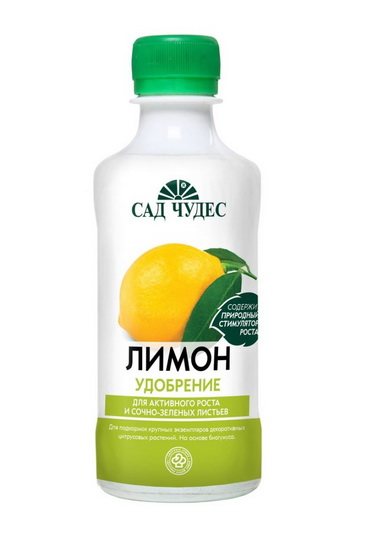

Fertilizers are applied regularly, without waiting for the appearance of these signs.
An excess of one substance suppresses the action of other nutrients, which also negatively affects the health of the lemon - development stops, flowers wither, fruits cease to set.
Growing lemon
For normal growth and development, lemon needs to create favorable conditions.
- The plant loves light, but does not tolerate the heat coming from the central heating batteries. The optimal place for him is the south side of the house, with diffused light. If there is a lack of it, the lemon tree is provided with additional artificial lighting.
Note. With a deficit of sunlight, lemon stops growing, and its excess, on the contrary, provokes rapid development.
- The tree doesn't like moving from one place to another.
- To form a perfect crown, the plant is advised to turn clockwise from time to time.
- The ideal temperature for him: not less than +15 degrees and not more than +27. During the flowering period, it should not exceed +18. Otherwise, the lemon tree will shed all the buds.
- Lemon does not like sharp temperature fluctuations.
- The optimum humidity is 65%. If it cannot be maintained naturally, the plant is sprayed with water from a spray bottle.
What fertilizers do citrus trees need?
Lemon is best suited for the alternating application of mineral and organic fertilizers. This is the only way to improve the composition of the soil, to keep it in good condition. Favorable changes are quickly reflected in the well-being of the plant.
Mineral fertilizers
They are inorganic in nature and contain nutrient compounds in the form of salts. Depending on the composition, they are divided into simple and complex.
During different growing seasons, lemons are fed with the following fertilizers:
- nitrogen - urea (1.5 g / l), ammonium nitrate (1.5% solution);
- phosphoric - superphosphate: put 50 g in 1 liter of water, bring to a boil, keep on fire for 30 minutes until completely dissolved. For long-term feeding, the granules are embedded in the ground;
- potassium - potassium sulfate (3 g / l).
In the summer, complex mineral fertilizers designed specifically for citrus plants work effectively. Their composition is balanced, therefore, it most fully meets the needs of lemon:
- Health Turbo;
- Bona Forte (Bona Forte);
- Pokon
The products are available, sold in many gardening stores. It is best suited for beginners as it eliminates the need to select individual drugs.
You can use natural organo-mineral formulations:
- the organic base improves the agrotechnical properties of the soil, increases the percentage of digestibility of nutrient compounds;
- macro- and microelements eliminate starvation.
A popular fertilizer for feeding is Gumi-Omi Kuznetsova Lemon.
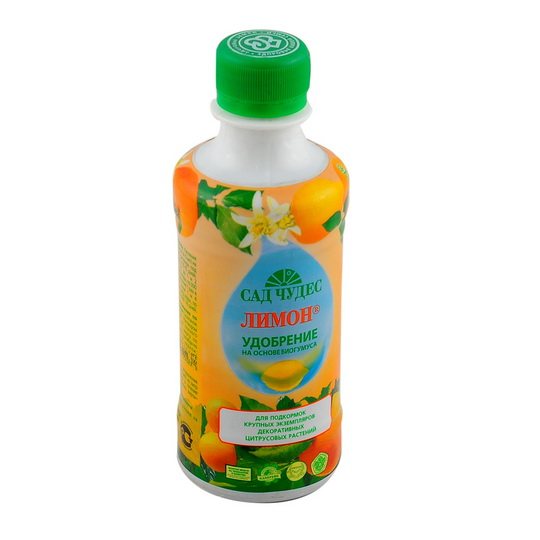

Organic fertilizers
They contain a complex of useful compounds, activate the work of beneficial bacteria, produce a prolonged effect. The best fertilizer for citrus fruits is horse manure infusion. It is permissible to use mullein instead. The droppings of birds - chickens and pigeons - work just as efficiently.
The waste products of animals are rich in nitrogen, in smaller doses they contain phosphorus, potassium and calcium. Before use, fresh fertilizers are fermented for 14 days, then diluted at a rate of 1 to 10 and phosphorus-potassium compounds are added.
An alternative is humus - a natural source of nitrogen formed during the decomposition of plant residues and excrement of herbivores.
Folk remedies for feeding
Home-made products show a good effect. Many products used in everyday life are rich in minerals. With the right combination, folk remedies replace purchased drugs.
| Product | Mode of application |
| Weed infusion | It is a complex fertilizer. Greens of nettle, wormwood, dandelion, chamomile, clover, woodlice, milkweed are poured with water, kept for 7-10 days, filtered, diluted at a rate of 1 to 10, used for watering. |
| Wood ash | Replenishes the lack of potassium, calcium, phosphorus. Used in liquid form (1 tablespoon per 1 liter of water). |
| Quinoa leaves | Rich in nitrogen. Raw materials are crushed, laid on the soil surface or replaced with the top layer. |
| Bone glue | Phosphorus source. 2 g is added to 1 liter of water, boiled for half an hour, cooled, and watered. After the procedure, the soil is loosened. |
| Sleep tea, coffee grounds | They enrich the earth with microelements, vitamins, make it looser. They act as an auxiliary feeding. Raw materials are embedded in the soil by 2-4 cm. |
| Potassium permanganate | Disinfects the soil, eliminates the lack of manganese and potassium. Lemons are watered overnight with 1% solution. |
| Sugar | Breaks down into fructose and glucose. The latter provides lemons with energy. Sugar can be simply poured into a pot or a solution can be made at the rate of 1 tbsp. l per 0.5 l of water. |
| Eggshell | Natural source of highly digestible calcium carbonate. The raw materials are dried and crushed into powder. Infusions are prepared from it or used dry. To improve the absorption of elements, add a couple of tablespoons of starch. |
| Bloody water from defrosting and washing meat | The composition is similar to phosphorus-potassium fertilizers. However, using it at home is problematic - an unpleasant smell will come from the pot. |
Aquarium owners water lemons with old water. It contains the remains of fish activity, food particles that rot in the soil and feed the lemons.
Foliar dressing of lemon
To quickly restore the balance of essential substances, they resort to spraying. On the leaves, especially on the underside, there are many stomata - pores. With their help, the plant exchanges elements with the environment.
Foliar dressing of lemon helps out in case of damage to the root system - the tree quickly absorbs fertilizers through the leaves. However, spraying cannot replace feed through the soil. It plays the role of a kind of ambulance when the condition of the plant cannot be improved in any other way.
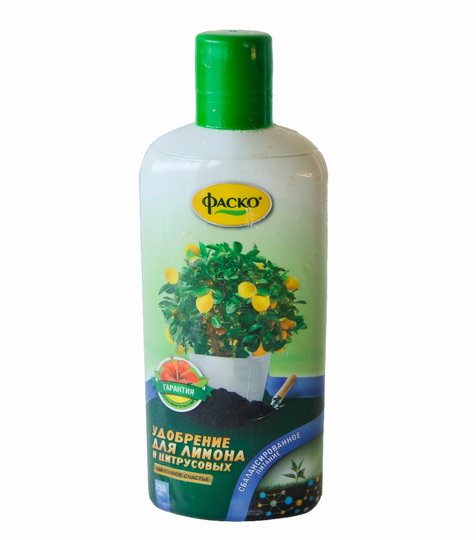

For foliar feeding, complex preparations with microelements are used. A weakly concentrated solution is evenly applied to both sides of the sheet plates. The procedure is carried out in cloudy weather to avoid burns.
Fertilizer overdose
Too high concentration of macro- and microelements in the soil can lead to diseases, a decrease in yield, and sometimes - to the death of a plant. So, with an excess of nitrogen, the growth of shoots and leaves increases, but the lemon stops bearing fruit, and due to the surplus of potassium, burns and necrotic spots may appear on the foliage, and the fruits will acquire an irregular shape and thick peel.
In order to reduce the concentration of this or that element, it is necessary to water the plant abundantly for several days, thereby washing out excess salts from the soil.
How to fertilize lemon at home?
The plant has a rather small root system. She cannot absorb large doses of fertilizers, therefore, fertilizing indoor lemon is carried out often, but in small quantities.
Optimal fertilization pattern
The nutritional requirements of a lemon vary according to the vegetation stage:
- in the spring, when the tree is actively growing, nitrogen compounds are required to help gain green mass;
- during flowering and ripening of fruits, they give phosphorus and potash fertilizers. Nitrogen is excluded, otherwise the lemon will stretch upward and not bear fruit.
In autumn and winter, the plant enters a dormant phase. The need for nutrients is reduced, but not completely eliminated. To avoid starvation, small doses of complex preparations are applied every 30-45 days. An exception is wintering at a temperature of + 7… + 12 ° C without additional lighting. Then they stop fertilizing the soil.
Average feeding scheme:
| Month | Fertilizer (g per 1 l) |
| February | Horse manure infusion - 150 |
| Superphosphate - 10 | |
| Mullein infusion - 150 | |
| March | Poultry droppings solution - 100 |
| Superphosphate - 5 | |
| Mineral complex (according to instructions) | |
| April | Superphosphate - 5 |
| Potassium sulfate - 3 | |
| Complex fertilizer | |
| May | Urea - 1.5 |
| Superphosphate 5 | |
| Mineral complex | |
| June | Urea - 1.5 |
| Potassium sulfate - 3 | |
| Superphosphate - 5 | |
| July | Bird droppings - 40 |
| Slurry - 100 | |
| Mineral complex | |
| August | Potassium permanganate - 0.2 |
| Complex preparation | |
| September | Potassium sulfate - 3 |
| Superphosphate - 5 |
The schedule is adjusted, focusing on the condition of the lemon, the number and size of the fruit.
Optimal scheme
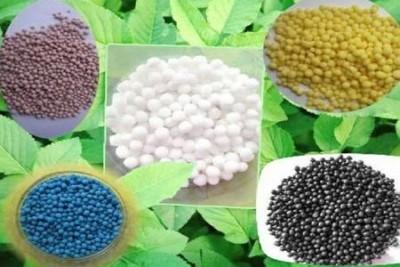

The nutrients introduced for feeding vary depending on the onset of different months:
- in March and April superphosphate and mullein infusion are used;
- in May, June and July - superphosphate, urea and potassium sulfate;
- but in August - everything is the same as at the beginning of summer, but with the addition of slurry and manganese.
In autumn, complex fertilizers are used, and in winter, if desired, foliar feeding can be done.
Mistakes in feeding homemade lemon and tangerine
Failure to comply with the rules for fertilizing will turn into unpleasant consequences for the lemon tree. Novice florists make the following mistakes:
- They are fed after transplanting - injured roots are not able to assimilate the incoming fertilizers. It takes 45-60 days to recover.
- Sick citrus fruits are fertilized - if the tree is withering, you must first eliminate the cause of the ailment and return it to its normal state.
- Concentrated formulations are introduced during the rest period - the lemon will not be able to rest and prepare for the next season.
- Fertilize dry soil - there is a high risk of burning the roots. Before the procedure, the soil must be moistened, and the working solution is poured out slowly until it soaks the entire earthen lump.
The plant is not fed with expired drugs: after the expiration date, they lose their useful qualities.
Correct feeding at the right time helps to accelerate growth, keep the tree healthy, and get a bountiful harvest. How to fertilize the lemon - with ready-made or home-made means - depends on the owner's desire. The best result is achieved with the alternate use of organics and mineral complexes.
The lemon tree needs to be fed monthly, all year round. If there is a lot of fruiting, then everything is being done correctly. In addition to fertilizing, the tree needs watering and processing of the crown. Each microelement in the fertilizer has its own effect on the growth of citrus and its development, and the lack of one of them has a detrimental effect on the plant.
In our strip, it is popular to grow lemon at home.
The importance of feeding
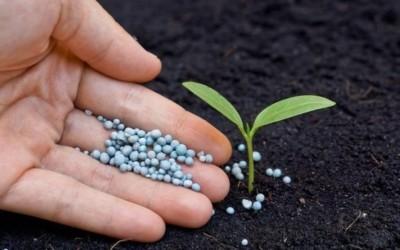

Timely application of fertilizers has a beneficial effect on the growth of any plant, Moreover, in the case of the lemon tree, feeding is important not only to maintain the healthy appearance of the plant, but also to increase the volume and quality of fruiting.
The shape, size, taste of the fruit - all this also depends on fertilizers, the use of which cannot be neglected.
External signs of a lack of trace elements in the lemon tree
A tree needs a huge list of trace elements in order for it to fully develop and bear fruit. The table shows the external signs by which you can track the lack of specific nutrients.
Table - "Lemon and the lack of some nutritional components"
| Deficiency: | Signs: |
| nitrogen | slowdown in growth; small young leaves of a pale color; old leaves are yellow and die off; fragility of the stems; the number of fruits is declining |
| phosphorus | dull greens; growth retardation; a small number of buds and ovaries; deformed fruits with thick skin |
| potassium | large disproportionate leaves with spots and shriveled; the leaves of a flowering tree begin to fall; yield decreases; the fruits become soft |
| iron | a gradual change in the color of the foliage: first in the young, and then in the old; highlighting dark veins; dying off of immature small fruits |
| calcium | fragility of sheet plates, change in shape; the roots stop growing; pallor of young stems; painful appearance of the tree |
| copper | loss of turgor sheets; the appearance of yellow spots; the tops of the crown dries up |
| boron | young foliage brightens at the base and at the edges, curls, becomes necrotic and dies off; dark spots appear on the fruit |
| manganese | fading foliage; clear veinning |
| sulfur | symptoms resembling nitrogen starvation |
| magnesium | complete color of the foliage with yellowness, except for the tips; it may fall off immediately or after a while; emaciated plant species; the root system does not develop |
| zinc | small foliage with light tops; the formation of outlets; dying off of old leaves; light, yellowish areas appear between the veins of greenery; narrow leaves on new shoots |
Full development provides a lemon fertilizer containing impressive doses of macronutrients such as nitrogen, phosphorus and potassium.
Signs of a nutritional deficiency
Nitrogen. The lack of this mineral is expressed in a change in the color of the leaves (becomes faded) and growth arrest. This is especially noticeable in the spring, when the plant comes out of dormancy and begins to actively develop.
Phosphorus. With a lack of phosphorus, it will be difficult for a lemon tree to give a full harvest. The plant can bloom profusely, but not give a single ovary. With an acute deficiency of the mineral, even the foliage rapidly turns black and falls off.
Potassium. The lack of potassium is given by the weakening of the plant, soft fruits, their long ripening. The leaves change color, especially at the edges, then the decolorization process covers the whole plant. If you do not take action in time, all the foliage will fall off.
Calcium. Deficiency of this mineral blocks the development of the root system. Nutrients begin to flow in an incomplete volume. In this case, the dying off of the upper shoots of the citrus also occurs.
In addition to the lack of nutrients, the lemon tree is often deficient in micronutrients. This is expressed in the appearance of light specks on the leaves. The latter fall off over time.
The best nitrogen fertilizers for fertilizing lemon: dosage and timing of their introduction into the soil
The area of nutrition of the root system of indoor lemon is 20-30 times less than in nature.
Nitrogen feeding starts from the end of January and continues until the beginning of August. It ensures the rapid growth and development of the tree. Horse manure is a popular organic fertilizer. Method of preparation: 100 grams of raw materials are diluted per liter of water, then insisted for 2 weeks.
Horse manure can be replaced with mullein or chicken droppings, only raw materials need to be taken 40 grams.
Mineral fertilizers - urea or a complex set. Preparation: dilute in a concentration of 1.5 g per 1 liter of water.
Organics and minerals are not added at the same time, burns may occur.
Nitrogenous fertilizing is prohibited during the periods of flowering and the formation of young ovaries. Failure to do so may result in fruit falling off.
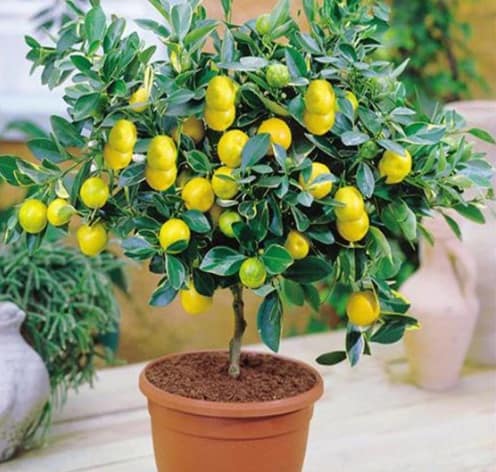

The renewal of nitrogen feeding begins from the moment when the fruits have reached a size of 1.5 cm in diameter. How to alternate fertilizers? With an interval of 10 days, circular feeding is carried out, except for prohibited periods. Organic additives are added first, then mineral ones.
Ammonium nitrate helps to neutralize nitrogen starvation - the most effective way. Solution preparation: 0.5% solution of nitrate is diluted with water and potassium salt is added.
What happens if you don't use organics and minerals?
Attention! The minerals contained in the purchased soil will only last for the first few months, after which the plant will certainly need additional nutrition.
Neglecting the use of fertilizers will lead to:
- disturbances in the growth and development of the lemon tree;
- damage to foliage;
- deterioration in the quality of the crop.
Thus, if you want to grow a healthy and beautiful citrus tree, achieve lemon flowering and harvest a good harvest, you will need to feed the plant and carefully monitor its condition.
By timely introducing complex fertilizers into the soil, you will not only provide a sufficient amount of all minerals, but also save your own efforts and time, because in the future you will not have to buy expensive micronutrient fertilizers to fill the deficit of this or that element.
The best fertilizer for the lemon tree during the preparation and resting stages: dosage and application
August-September is the time when the tree prepares for "hibernation". During this period, potash and phosphorus fertilizers are used. Due to this, the growth processes are completed, young shoots and nutrition are strengthened, the crown is preserved. During these months, potassium sulfate and superphosphate are used, which provide the citrus with phosphorus.
You need to feed the tree by root and foliar method, diluting complex inorganic fertilizers with water, since it is the complex additives that contain phosphorus and potassium, which is necessary for plant nutrition before winter.
Superphosphate granules are difficult to dissolve in water, so they are dropped under the topsoil.
Watering at the root and spraying the crown must be alternated. And the concentration for each type of feed is different.
It is necessary to feed the "winter lemon" if it is in a warm environment, the temperature regime of which ranges from 19 to 21 degrees, with a frequency of 1 time per month. Root and foliar alternation is encouraged. And as fertilizers, they use balanced mineral fertilizers for citrus plants.
At a room temperature of 7-12 degrees and without using tree lighting, feeding is not needed. The lemon will rest.
Features of dressings depending on the growing season
You need to select top dressing taking into account the phase of development in which the lemon is located:
- Height. At the beginning of spring, formulations with a predominant amount of nitrogen are used - an important component for building healthy green mass. The frequency of top dressing is once every 2 weeks, while it is recommended to alternate mineral mixtures with organic matter;
- Bloom. For the active laying of inflorescences, the lemon is no longer fertilized with nitrogen compounds, using dressings with a high content of potassium and phosphorus;
- Fruiting. For the formation of large and juicy fruits, a lemon needs a full complex of micro- and macroelements, mineral and organic mixtures with a high concentration of phosphorus are used;
- Peace. The lemon tree rests from October to the end of February, without needing additional food, if the temperature in the room is within + 7- + 12 degrees.If a stable temperature regime is established within + 19- + 21 degrees, fertilizing is applied once every 2 months to avoid lemon starvation. You need to feed it with ready-made store fertilizers.
It is not difficult to properly feed a lemon at home - you just need to focus on the appearance of the tree and the phase of its development, avoiding nutritional deficiencies.
As a result, you will achieve the amicable formation of inflorescences and the ripening of delicious fruits that are in no way inferior to the harvest harvested from trees in their natural environment.
Have you noticed that the lemon has begun to turn yellow, and the buds that form are falling off without turning into the desired fruit? If these problems began at the end of winter, then, most likely, your green friend just needs to be fed, because at this time of the year he begins to grow intensively and needs abundant nutrition!
Fertilizer for lemon is chosen based on two factors: the season and the state of the plant itself. In addition, it is important to follow the basic rules in dressing, violation of which can lead to illness and even death of a homemade lemon.
The content of the article:
Signs of lemon tree disease and the appearance of pests on it: control and elimination of bacteria
Like any plant, lemon can get sick or be attacked by pests. Every gardener must timely detect citrus ailment and eliminate the focus of the disease, otherwise, inaction will lead to its death. The table shows the most famous names of diseases, the causes of their occurrence and external signs affecting the lemon plant.
Table - "Diseases and conditions of their appearance"
| Name: | Signs: | Features: |
| Mealybug: | cracking of the bark; the appearance of gall-forming swelling; curvature of shoots; greens develop poorly | prolonged stay on the tree, leads to the death of the lemon |
| Whitefly: | oppression of the plant; the appearance of a sooty mushroom; possible premature sprinkling of foliage | insects feed on tree sap, are afraid of light, therefore they are most often located under the leaves |
| "Gommoz": | dying off of areas of the bark; release of a white or yellowish liquid (hardens in air), sticky consistency; damage to cambium and wood; the affected areas of the bark become hard, and when dry, they crack longitudinally; | damage to the root system can last up to 2 years; after the bark dies off, the leaves begin to ache; the fruits deteriorate very quickly, they become brown in color. Favorable conditions for the development of the fungus - high humidity in the room and temperature (about 27 degrees) |
| "Black": | plaque throughout the tree, black or gray; the presence of sucking pests that secrete excrement - a sticky liquid; | blocks the access of light and air to the foliage, therefore the tree is depleted, does not develop, ceases to bear fruit |
| "Wart": | small spots anywhere, turning into sharp bulges; deformation of leaves, fruits, trunk; fall of foliage | reasons for the appearance: high room humidity, temperature 15-20 degrees |
| "Chlorosis": | leaves turn yellow; smaller than the usual size of the sheet plate; | reasons: lack of mineral components and oxygen in the soil |
To weaken the attack of pests (diseases) and gradually eliminate it, the following drugs help:
- Copper sulfate to combat gommosis;
- Bordeaux anti-black liquid;
- Wood ash - prevention of various bacteria.
Table - "Processing lemon tree"
| Disease: | Recipe: | Treatment: |
| Lemon gommosis: | 50-100 g of copper sulfate (5-10%) per liter of water | cut off the affected areas of the bark to a "live" tree, disinfect the cuts and cover with garden varnish; diseased wood is burned |
| Black: | up to 5 sprays with a 1% solution of Bordeaux liquid | affected areas: leaves, fruits, branches, bark are cut out and burned, then sprayed |
To avoid contamination of the tree with gommosis, you need to properly care for it.In the summer, water the lemon with water heated in the sun, and in the winter - heated to 30-35 degrees.
How to feed indoor lemons
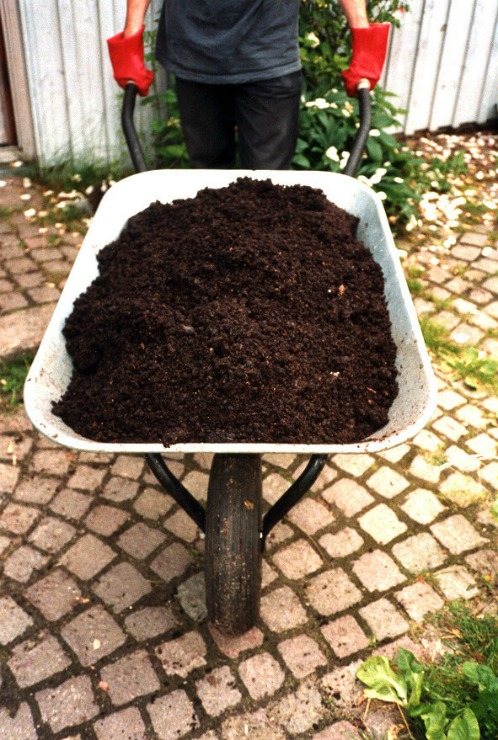

You can fertilize homemade lemon only with ripe compost - it has a deep brown color and a completely homogeneous structure
If your green pet does not show any clear signs of nutrient deficiency, then one of two schemes can be used for summer feeding:
- alternate complex compound fertilizers with natural organic dressings;
- alternate fertilizers for lemon containing potassium, phosphorus and nitrogen - that is, we feed one week with potassium fertilizer, another with phosphorus, the third with nitrogen, and so on.
From complex mineral fertilizers, you can choose, for example, liquid complex fertilizer Bona Forte for citrus fruits. There are a lot of positive reviews about him in runet.
The source nitrogen can serve as ammonium nitrate. On its basis, a weak solution is prepared - 2 tablespoons of the substance are dissolved in 10 liters of water. In the case of alkaline soil, it is better to replace nitrate with ammonium sulfate, while increasing the dosage by 1.5 times.
An organic alternative to nitrogen fertilizers is humus, bird droppings, slurry, and moose droppings (by the way, the latter is considered the most useful of those listed).
Top dressing is prepared as follows.
Fresh manure is diluted 1: 1 with water and allowed to ferment for 5-10 days (under a closed lid to avoid excessive loss). Then the mixture is diluted with water even more - mullein - 10-15 times, chicken droppings - 15-20 times.
Excessive nitrogen nutrition is extremely harmful for indoor lemons, so it is important not to overdo it here. If you are concerned about the well-being of your plant, use blood water instead of manure after washing the meat.
If you don't have manure at hand, then an excellent top dressing can be done on the basis of leafy humus or even ordinary oily leafy soil. Just fill humus or soil with water in a 1: 1 ratio, leave for two days, strain and treat your green ward with nutritious water.
Humus (compost) can also be applied dry: dig a shallow groove around the plant (just do not touch the roots!), Add compost there and water abundantly. It is useful to repeat this procedure once or twice a year.
Manure, of course, is a strong fertilizer for lemon, but not everyone is ready to put up with a specific smell that will remain in the apartment for a long time after such nutritious watering. It can be replaced by fertilizers based on humic substances - for example, Biopergnoy for citrus crops.
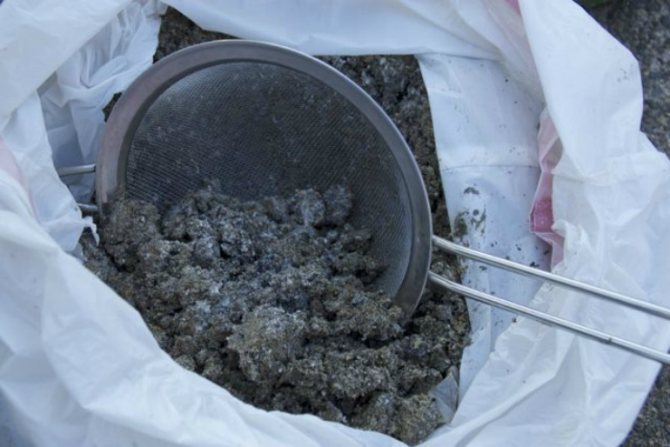

Ash is not only a supplier of natural potassium, but also a wide range of trace elements.
Potassium homemade lemon can be obtained from potassium salt. Only 1 tablespoon (about 20 grams) of this salt is added to 10 liters of water. It is permissible to add potassium salt and ammonium nitrate together (50 and 20 grams per 10-liter bucket, respectively).
An excellent natural source of potassium is deciduous tree ash. At the same time, the extraction from straw ash gives the best effect. For its preparation, a teaspoon of ash is dissolved in a liter of water and infused with periodic stirring for 10-15 days. The resulting solution is fertilized with room lemon without further reducing the concentration.
The role of potash feeding can be played by watering with a weak solution of manganese-sour potassium. Just do not get carried away - they should be watered no more than once a month.
Phosphorus homemade lemon is best given in the form of superphosphate. Since it is poorly soluble in water, it is boiled for 30 minutes before use (50 grams of granules are added per liter of water). Then the solution is filtered and diluted 10 times with water.Superphosphate goes well with mature manure or compost.
Fish contains a lot of phosphorus, so you can make a natural phosphorus supplement for your lemon from its broth. To do this, pour 100-200 grams of any fish (can be the cheapest) with a liter of water and boil for an hour. After that, strain the liquid, cool and store in the refrigerator. It is enough to add one or two tablespoons of fish broth per liter.
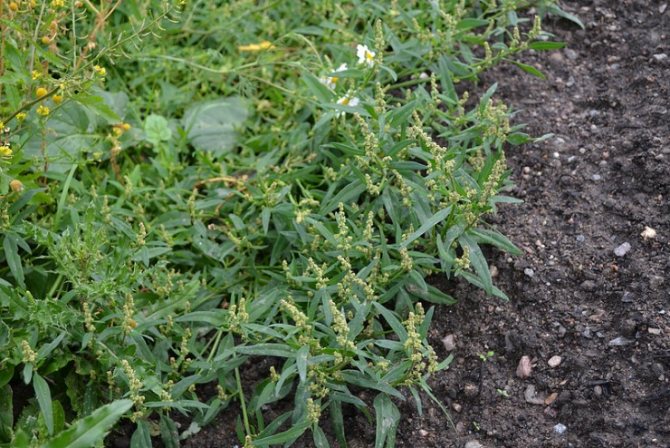

A plant such as quinoa is also rich in phosphorus. On its basis, a light phosphorus dressing for indoor lemon is prepared. Three hundred grams of dried leaves are soaked for 7-10 days in water, not forgetting about periodic stirring. The infusion is filtered and poured over the plant without diluting.
As a prophylaxis of diseases, it is useful to water homemade lemon 2-3 times a year with an unconcentrated solution of copper sulfate.
It happens that already in the first year, homemade lemon begins to actively throw out its buds. But by this time, the plant is simply not able to feed the fruits, so premature flowering greatly weakens it.
In such a situation, there are two ways to help a homemade lemon: first, by regularly removing the buds until they are larger than a match head; secondly, intensively feed the plant with nitrogen fertilizers.
But after all, abundant nitrogen fertilization can cause root burns, you say. Then foliar feeding, carried out by one unusual method, can help out.
The plant is not just sprayed with a nutrient solution, but literally dipped in leaves for 15-20 minutes. To do this, a warm urea solution (5 grams per 1 liter of water) is poured into an old deep saucepan and a lemon tree is immersed in it upside down. To keep the soil from spilling out of the pot, be sure to wrap a rag around it. As a result, the tissues of the plant are saturated with the substance necessary for it to lay leaf buds.
Output
Lemon is most often grown at home, so the article indicated dosages for indoor trees.
Those growers who grow citrus in greenhouses can use all the same care and application recommendations as for pot plants, but with an increase in dosage for feeding.
Every gardener knows that lemon is a capricious plant that requires regular maintenance. This includes watering, processing and feeding, and disease prevention.
The lemon tree does not like replanting and rearranging, the smallest turn of the pot with a plant can lead to serious problems.
It is desirable to feed the fruit crop with both mineral and organic fertilizers, alternating them, thereby making the closing circle.
Each gardener draws up a feeding schedule that is most convenient for him.
You can buy mineral fertilizers and lemon tree seeds at any specialized store.
It is necessary to feed a lemon growing at home, since only in this case its normal development, flowering and further fruiting is guaranteed.
The need for organic and mineral components is constantly felt by the tree - this is due to the limited space of the pot.
However, it is important to know in what proportions to apply fertilizers and which compositions to use, so as not to harm the culture and not even destroy a strong specimen.
We will tell you how to feed lemon at home.
Signs of a lack of nutrients in homemade lemon
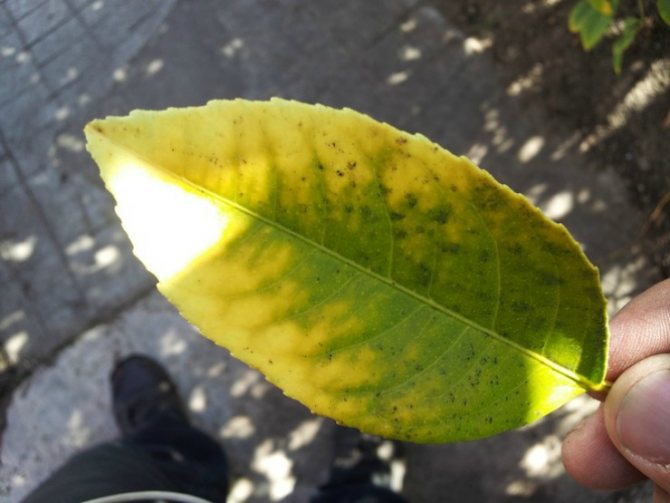

Lemon leaves yellowing is one of the sure signs of nitrogen deficiency.
And finally, I will tell you about the main signs indicating that your lemon is lacking in this or that substance.
- With a lack of nitrogen, a massive yellowing of the foliage is observed, the leaves become smaller (which is especially noticeable on the fruiting branch), the number and size of fruits decreases.
- When the lemon growing in the room lacks phosphorus, the leaves turn pale and crumble, the fruits grow rough and twisted.
- With potassium starvation, the leaves become large and folded, but the fruits are small and there are always few of them.
Similar symptoms (pallor of leaves followed by yellowing) are present with iron deficiency. In this case, the plant often throws off the fruits, and the tops of the shoots dry out and die off.
Weak leaf growth, strange spots, premature death of shoots - all this hints at an insufficient amount of calcium in the soil.
The lack of basic microelements - magnesium, copper, boron, zinc and others - also negatively affects the health of the lemon. Therefore, when purchasing fertilizers, pay attention that they contain a full set of trace elements.
An interesting recipe for feeding homemade lemon is described in the video. It explains how to make a special citrus skin compost and use it to fertilize homemade lemons. Find out why this is a very sensible idea from the video (if you haven't already guessed it yourself!).
One note about the video. I would not water the compost after adding it to the pot with such a highly concentrated solution of Baikal EM-1. Still, there is little soil in the pot and there is no need to colonize it with so many bacteria (albeit useful ones). In my opinion, a concentration of 1: 2000 is sufficient.
This article on fertilizer for lemons is part of a series on how to grow this citrus at home. The blog has already published the following materials:
Subscribe to the blog to be the first to know about new interesting articles on this topic!
Please let me know what suggestions you have for future topics for indoor lemon articles!
Growing a lemon tree at home is not easy. He needs a certain temperature, humidity and a full range of nutrients. With intensive growth, fruiting, the need for organic and mineral fertilizers increases sharply, and therefore you need to know how, when and in what proportions to fertilize this citrus.
Why don't you forget about feeding?
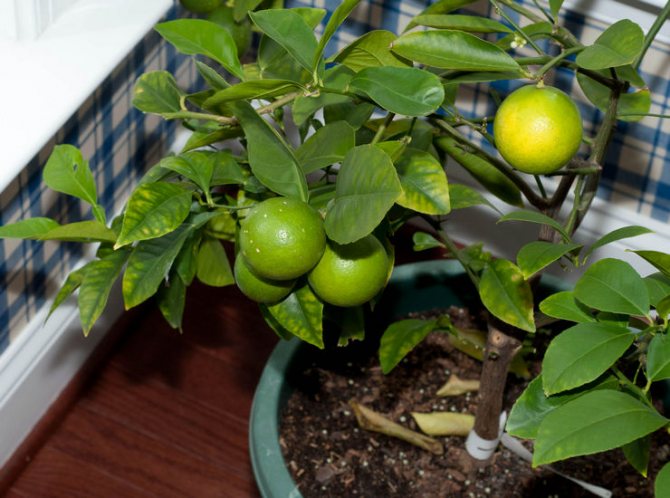

At home, it is best to grow varieties specially bred by breeders and adapted for indoor conditions (Lisbon, Panderoza, Pavlovsky, Meyer, Yubileiny, Eureka and others).
Indoor hybrids feel great on a well-lit windowsill, but they require the creation of a suitable microclimate and regular feeding.
Fertilizers and feeding
For normal growth, development, the earliest start of fruiting, lemon needs both mineral fertilizing and organic matter.
Mineral
Most often, saltpeter is used, which quickly relieves the plant from nitrogen starvation. Dilute it to obtain a 1.5% solution. Sometimes combined with potassium salt.
Phosphorus deficiency is eliminated with superphosphate. This fertilizer dissolves for a long time: 50 g of mineral raw materials are boiled in a liter of water, after half an hour of continuous boiling, all the granules will dissolve. This volume is diluted with 10 l of water and used.
Since superphosphate is a long-acting drug, it can be embedded in the ground in the form of granules. The latter, when watered, will slowly dissolve and supply the plant with the necessary mineral.
Organic
Of all the variety of natural fertilizers, lemon prefers two:
- Mullein
- Chicken droppings (solution).
Mullein is famous for its rich composition: the nutrients from it saturate the potting soil with all the components necessary for growth and development.
Fresh fertilizer should be poured with warm water and left to ferment. It will be ready in 14 days. Before use, the composition is diluted with water (1:10), adding a little potassium-phosphorus fertilizers.
Note. Superphosphate enhances the action of organic matter, accelerating the process of returning all nutrients to the soil.
Chicken manure is also used in the role of organic matter. It is a very concentrated fertilizer and should only be applied very diluted. Dosage: for a bucket of water - 1000 g of raw or 500 g of dry matter.
Poultry manure is famous for its high nitrogen content, and therefore it should be applied immediately after breeding. Otherwise, some of this mineral will evaporate.
It is not recommended to use mineral compositions together with organic matter. This will only lead to severe burns and subsequent death of the plant.
Top dressing methods
- Basal. This method involves diluting fertilizers in water and watering them on a lemon tree.
- Foliar. This means spraying, by means of which fertilizing can also be effectively applied.
Important! Lemon leaves are sprayed often enough. And once every 30 days, the procedure is combined with the usual root feeding.
It is best to use ready-made complexes specially designed for foliar use.
Folk remedies
- The deficiency of phosphorus and potassium can be easily replenished with wood ash diluted in water (one small spoonful of dry matter per liter of water).
- The lack of nitrogen is sometimes made up by quinoa, previously crushed. Sprinkle it on the plant, slightly mixing the raw material with the soil.
- Tea leaves will enrich the soil with calcium and copper, magnesium and iron, manganese and phosphorus. It is pre-dried to avoid rotting in the pot.
- Coffee grounds will compensate for the lack of magnesium, nitrogen, potassium.
- When fruiting, it is recommended to water the plant with a shell-based infusion.
- During the period of rapid growth, ordinary sugar will support the lemon tree.
- Some growers use aquarium water to water their lemon. It is rich in humus, and therefore very useful for the finicky citrus.
How to feed lemon at home?
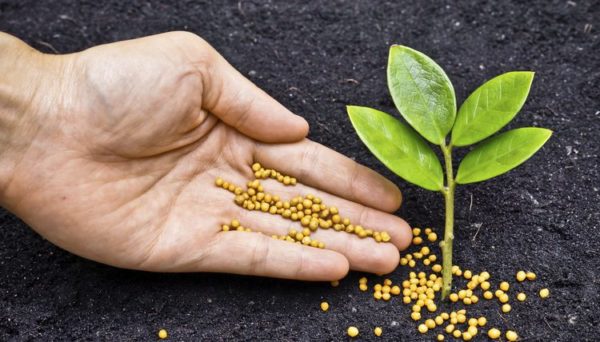

For the nutritious nutrition of the lemon tree, both mineral and organic dressings are used.
In this case, fertilizers can be applied in one of two ways:
- Basically. The composition is diluted in water and applied to the soil at the same time as irrigation or to wet soil;
- Foliar (according to the sheet). A small amount of top dressing is added to the spray water.
For maximum efficiency, a combination of root and foliar dressing is recommended - in this case, the lemon absorbs all the necessary substances better.
Mineral compositions
The following formulations are most often used as mineral dressings:
- Ammonium nitrate. Diluted to obtain a solution (1.5% or 0.5%), used to eliminate nitrogen starvation.
- Superphosphate (with a phosphorus deficiency). 50 g of fertilizer is boiled in 1 liter of water for half an hour until the granules are completely dissolved, then diluted in 10 liters of liquid and used as needed. Superphosphate can also be added in the form of granules, embedding directly into the soil (feeding with prolonged action, will dissolve gradually when watering).
- Complex fertilizers for citrus fruits. Special blends contain all the trace elements required for lemon.
Important: it is necessary to observe the dosage when applying mineral fertilizers in order to avoid overfeeding. Otherwise, an overabundance of minerals leads to inhibition of tree growth.
Organic feed
Lemon reacts positively to organics, but here you also need to observe the measure, as when using mineral compositions.
The following are considered optimal for this culture:
- Infusion of mullein. It is prepared according to a simple scheme - fresh mullein just needs to be diluted with water and left for 2 weeks. At the end of the period, the fertilizer is diluted with liquid (ratio 1:10) and used for irrigation.
- Solution based on poultry droppings. It is used immediately after preparation, as the beneficial properties are lost over time. The proportions are as follows: 1 kg of wet manure per 10 liters of water or 0.5 kg of dry manure for the same amount of liquid.
It is not recommended to use organic compounds together with mineral ones - such negligence leads to burns of the root system and the subsequent death of the lemon.
It is also not worth using several types of organic matter in the process of one feeding, so as not to harm the culture. Be sure to apply fertilizers to a wet substrate!
Use of succinic acid


Succinic acid tablets, which you can buy at any pharmacy or flower shop, are good for lemons at any stage of development.
The component does not accumulate in plant parts and soil, but it is characterized by stimulating and immunity-enhancing properties.
The use of succinic acid allows the lemon tree to successfully assimilate nutrients from the soil, actively build up the root system and form a large number of inflorescences and ovaries.
The dosage of succinic acid differs depending on the method of use:
- Watering - 10 tablets are dissolved in a glass of water, then the volume of the solution is increased to 1 liter.
- Spraying the ground part - 1 tablet per 1 liter of warm water.
- Rooting cuttings - 3 tablets are dissolved in 1 liter of liquid, then a young seedling is placed in the solution for 1 hour before planting (it is necessary to plant it in the ground after it has completely dried).
Succinic acid can be used every 2-3 weeks. It is important to remember that the drug will not completely replace top dressing - it acts only as a useful additive that contributes to the full assimilation of fertilizers.
Folk remedies
You can also use improvised means that can be found in any home as top dressing.
How to feed:
- Wood ash. Contains potassium, phosphorus and calcium, the recommended dosage is 1 tbsp. spoon for 1 liter of water.
- A weak solution of potassium permanganate (slightly pink). It is used for easy feeding of lemon and disinfecting the soil, it is better to water at night for better assimilation.
- Dried tea or coffee brew. Enriches the soil with manganese, magnesium, potassium, calcium, copper and phosphorus.
- Ordinary aquarium water will become a source of useful vermicompost.
It is periodically recommended to water the lemon with eggshell infusion, which has a positive effect on the fruiting of the culture. However, you should not get carried away with this top dressing so that the calcium content in the soil remains within the normal range.
What to look for when buying?
The main thing when buying top dressing is to carefully study the label: the fertilizer must be marked "for citrus fruits".
One of the most common complex fertilizers for lemon is liquid fertilizer from the Bona Forte brand, which can be bought both in the online store and in retail stores.
The largest store where you can buy this fertilizer and products of other brands is Leroy Merlin. In Moscow and Moscow stores, the cost of Bona Forte fertilizing for citrus fruits fluctuates around 120 rubles, in St. Petersburg stores the price is lower - about 110 rubles for the same volume (0.285 l).
What dressing to use for homemade lemon
Every self-respecting grower should grow a lemon tree. In order for the plant to thrive in an unnatural environment, you should know the basic rules for caring for indoor lemons. Timely feeding will make the fruiting abundant, and the plant strong and healthy.
How to understand that something is missing from a lemon
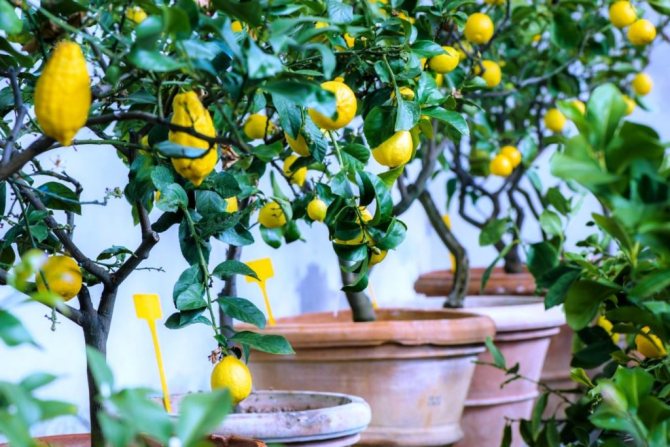

In order for the crown of the plant to be healthy and the flowering to be abundant, the lemon must be properly looked after. Regular fertilization is a basic requirement, as the bush needs regular replenishment of the soil with nutrients. With a lack of useful trace elements, you can observe:
- the plant withers, the bush looks painful;
- fruiting stops;
- there is no ovary, no flowering is observed;
- some of the leaves curl up and die off;
- weak shoots;
- the veins on the shoots become more pronounced;
- the leaves turn yellow or turn pale;
- foliage is crumbling.
The lack of manganese and iron is manifested in the formation of veins on the foliage.The lack of sulfur is indicated by a change in the color of the leaves. With a deficiency of potassium, the foliage begins to curl and turn pale. The same situation is observed in young shoots. The symptoms of a deficiency in potassium and boron are similar. The green part of the plants curls up and loses its natural color. Watery spots may form, which will become transparent over time. The veins are unsticked and covered with a characteristic crust.
The constant wilting of foliage indicates the absence of a sufficient amount of copper in the soil mixture. The color does not change, but the plate will expand and the shape becomes irregular. Young shoots will begin to deform. Fruits become covered with dark spots, and tar stains form on the surface of the peel. When the first signs of nutrient deficiency appear, it is necessary to feed as soon as possible.
What minerals and vitamins does lemon need?
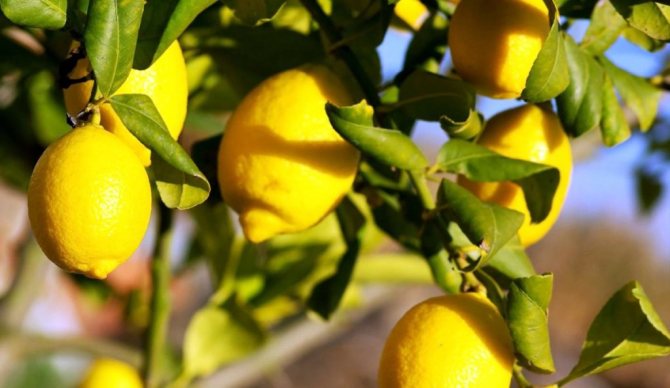

The fertilizer package should correspond to the current needs of the plant. For active flowering and abundant fruiting, the lemon should be fed regularly in order to maintain the balance of essential trace elements and macronutrients. Potted lemon should be fertilized with:
Nitrogen is applied twice as much as other fertilizers, regardless of which additives are used.
Phosphate fertilizers for feeding
Phosphate fertilizers can be divided into simple phosphates and double superphosphates. The former contain no more than 20% phosphorus in their composition, and the latter are saturated with it by 50%.
For feeding lemon, it is recommended to use superphosphate, which is produced in the form of granules, which are practically insoluble in water. Therefore, this fertilizer can simply be applied to the soil in a small amount, mixing with the ground. Superphosphate is a long-lasting fertilizer, as it penetrates deep into the soil and saturates the plant after each watering.
Lemon development by period
The growth of the lemon does not stop throughout the life of the bush. However, the type will directly depend on the phase in which the citrus is found.
| Stage | Description |
| A period of active growth | The first top dressing is applied with the onset of spring. It is preferable to use nitrogen-containing compositions, since the plant is in the stage of active growth, for which nitrogen is required. Until the onset of flowering, fertilizing is introduced every 2 weeks. Preference should be given to complex formulations that are rich in the content of useful microelements. Mineral compositions alternate with organic ones. |
| Flowering period | For the onset of flowering, lemon will need a lot of nitrogen. During this period, phosphorus and potassium are also introduced. |
| Fruiting period | During the period of fruit ripening, lemon needs complex dressings, and not just organic ones. In particular, preference is given to phosphorus-containing compositions. With a lack of nutrients, the fruits will darken, dry out and fall off. The shape of the fruit will be formed incorrectly, and the rind will turn out to be dense. |
| Rest stage | The period runs from October to February. The introduction of nitrogen should stop, but the volume of phosphorus and potassium should be increased. Wintering at a temperature of + 7 ° C - + 12 ° C and insufficient lighting, no additional feeding will be applied. The plant is in the dormant stage. |
Sources of nutrients during the period of active growth and fruiting
Lemon is an evergreen tree that grows throughout its life, which is why the plant requires constant regular feeding. Indoor lemon usually reacts very well to all types of mineral and organic fertilizers, but they should not be applied at the same time in any case, as this can harm the plant more than help.
As already mentioned, the active period of development and growth of the lemon tree falls on March - September. At this time, the branches have everything - from flowers to ripe fruits. Therefore, the most relevant during this period will be complex fertilizers.It is better for novice gardeners to buy ready-made dosed complex fertilizing and follow the instructions for applying them to the soil exactly.
In addition, at home, you can very easily fertilize lemon with available tools:
- nitrogen sources - silt or crushed quinoa leaves; they replace the topsoil in pots with lemon; if you prefer nitrate, then you need to water the plant with a 0.5% solution;
- phosphorus - an excellent source is carpentry (bone glue); Mix 2 g of glue with 1 liter of water and boil for 30 minutes, cool, pour over lemon, after half an hour, loosen the soil well; it is good to add superphosphate to the slurry during fermentation (50g per 10l) and then feed with this solution;
- calcium + phosphorus + potassium - ordinary wood ash serves as a full-fledged fertilizer for citrus fruits, the norm is 1 tbsp. spoon for 1 liter of water;
- tea leaves and coffee grounds contain many useful trace elements - magnesium, potassium, calcium, phosphorus, manganese, copper, iron; of course, their number is not enough to properly nourish the tree, but as an auxiliary feeding it is quite suitable, you just need to be careful so that black midges do not start;
- not a strong solution of potassium permanganate at the same time nourishes the plant and disinfects the soil, only they need to be watered at night, since in sunlight the solution quickly turns pale and loses its strength;
- organic fertilizers - manure, chicken or pigeon droppings, which must be diluted with water, fermented for 10 days, and then add water, bringing to a low concentration, and water the plants; it is necessary to take into account that fresh manure is healthier, since it is enriched with nitrogen as a result of fermentation.
Of course, you can buy specially balanced complex fertilizers for citrus crops - it will be easier for beginners to monitor the health of pets.
Development periods
The lemon grows almost continuously. Therefore, feeding is applied regularly. However, its type depends on the phase of development of the citrus.
During the growth period
Citrus is fed for the first time at the very beginning of spring. For this, mainly nitrogen complexes are used. At this time, the plant needs strength to start growing.
After that, feeding is done every 14 days. Up to flowering. It is optimal to use complex formulations containing a large amount of trace elements. Mineral compositions alternate with diluted organic matter.
During flowering
To wait for the flowering of the lemon tree, they stop applying fertilizers containing nitrogen (this substance stimulates the abundant growth of green mass to the detriment of flowering and fruiting). During this period, potassium and phosphorus are especially relevant.
Note. It will be possible to resume the application of nitrogen only after the citrus fruits have reached a diameter of 15 cm.
During fruiting
During this period, citrus needs a full range of macro- and microelements. Chemical compositions alternate with organic tinctures. Phosphorus is especially needed. It is he who is responsible for the growth and development of fruits. With a lack of mineral, citrus leaves turn brown, dry, fall off. And the fruits acquire a rough, thick skin and an irregular shape.
At rest
This period lasts from about October to the end of February. In the process of preparing for it, the introduction of nitrogen is stopped, the amount of potassium and phosphorus is increased.
If the lemon tree hibernates at a temperature of + 7 ... + 12, without additional lighting, then no additional fertilizing is applied. The lemon will be dormant.
If it is supposed to keep it in a room at + 19 ... + 21, then fertilizer will have to be applied so that the plant does not starve. Only reduce the dosage by three times. The frequency of its introduction is once every 60 days. At this time, ready-made complexes are used. They are brought in both by root and foliar methods.
Note. All the main dressing is done in the spring-summer period, when the trees are actively growing. No fertilization is required at rest.
Seasonal Lemon Feeding
| When | Than | The number of grams per 1000 ml of water |
| February | Mullein infusion | 150 |
| Superphosphate | 10 | |
| Mullein infusion | 150 | |
| March | Complex mineral fertilizer | According to the scheme |
| Poultry manure solution | 100 | |
| April | Mineral complex | According to the scheme |
| Urea | 2 | |
| Superphosphate | 6 | |
| Mineral complex | According to the scheme | |
| May | Urea | 1,6 |
| Potassium sulphate | 4 | |
| Phosphate | 6 | |
| June | Divorced mullein | 100 |
| Complex mineral fertilizer | According to the scheme | |
| Urea | 1,6 | |
| July | Slurry infusion | 100 |
| Mineral complex | According to the scheme | |
| Urea | 1,6 | |
| August | Manganese | 0.3 (powder) |
| Mineral composition | According to the scheme | |
| September | Potassium sulfate | 4 |
| Phosphate | 6 | |
| October |
Complex fertilizers
According to the scheme
Frequency of dressings
In order for the plant to grow and develop correctly, you will need to take care of it and fertilize it annually. It is best if, at the same time, a certain frequency of fertilizing is maintained:
- March - manure and superphosphate are added once a week;
- April - superphosphate, potassium sulfate and complex additives are used three times;
- May - urea, superphosphate and complex additives are added once a week;
- June - it is best to add potassium sulfate, urea and superphosphate once a week;
- July - droppings, boric acid and slurry are periodically added;
- August - potassium and complex fertilizers are applied as needed;
- the rest of the months - a complex supplement or mineral supplement is added only once a month;
Citrus care
To care for citrus crops, there is no need to perform any overwhelming work and serious requirements. It is based on simple rules that must be followed:
- Fresh air. Oranges, tangerines, lemons and grapefruits do not grow well and develop in rooms where the air is dry by heating, and there is no supply of fresh air and sun. In order for the culture to receive a sufficient amount of ultraviolet radiation and fresh air, it is recommended to put the pot with it on the windowsill, but it is important to avoid drafts.
- Natural light. Citrus fruits love a lot of light, but direct sunlight will be detrimental to them. If your home does not have windows on the sunny side, this is not a reason to give up growing citrus. For cultivation, you can choose lemon or citron, these shade-loving crops will take root in such conditions.
- Watering. Without exception, all types of citrus like abundant watering. The soil in the pot should always be moistened, but the plants should not be poured either. For irrigation, you must use soft water, preferably settled for several days. Chlorinated and hard water is not suitable for citrus fruits; leaves turn yellow and fall from it. Plants also need frequent and abundant spraying.
- Top dressing. Citrus crops require a lot of minerals and trace elements. These plants provide a supply of nutrients, quickly depleting the earth, so feeding should be regular. Active application of fertilizers to the soil should be started during the growing season - from late winter to early spring. Organic and liquid mineral fertilizers are suitable for plant care. Top dressing should be continued until autumn.
- Priming. To grow citrus fruits at home, you must use a soil mixture made from river sand and garden soil. For this culture, soil prepared from 1 part of humus, 3 parts of sod land and 1 part of sand is also suitable. If desired, you can buy a ready-made substrate designed specifically for citrus fruits in flower shops.
- Temperature. Citrus fruits are southern plants, so they cannot stand cold weather. For flowering and fruit formation, the ideal air and soil temperature is + 15-18 ° C. However, in winter it is necessary to create dormant conditions, for this the plant must be kept in cool and even cold rooms, where the average air temperature is from +8 to + 12 ° C.
Good to know: To prevent water from stagnating in the root system, it is imperative to ensure good drainage. For this purpose, a thick layer of small pebbles or brick chips should be laid out on the bottom of the pot.
Symptoms of mineral starvation
The lack of mineral elements leads to chlorosis (loss of green color) or necrosis (death) of young and old leaves. Warning signs of malnutrition in indoor lemon:
- yellow specks appear on the leaf blade, chlorosis gradually spreads to the entire leaf, shortened shoots and too light young leaves appear (nitrogen deficiency);
- leaves become dull and turn at right angles to the stem, flowering is poor, fruit growth is disturbed (phosphorus deficiency);
- individual parts of the leaf turn yellow (deficiency of potassium, magnesium or zinc);
- young leaves curl and lose color (calcium deficiency);
- the blade of young leaves becomes light and dull, while the veins remain green (iron or manganese deficiency).
To avoid the appearance of such symptoms, indoor lemon and other citrus fruits are fed 3-4 times during the period of active growth and once every few months during the rest period. Professional gardeners recommend alternating the application of organic and mineral fertilizers. Synthetic preparations should be introduced with caution, carefully observing the dosages recommended by the manufacturer. When mineral fertilizing is abused, the soil becomes acidic, and the plant experiences stress, which negatively affects its appearance.
How to grow lemon at home video
Along with other indoor plants, citrus fruits are demanding in terms of care and keeping conditions. Not all flower growers manage to create the necessary tropical climate for miniature indoor trees. Fertilizing citrus fruits at home is also important, it provides plants with full growth, flowering and fruiting.
These indoor plants should be fed with extreme care. It is important to follow all the rules for preparing fertilizers for application to the soil. Lemon, tangerine, orange and other indoor trees in this family do not like overfeeding. In case of an overdose, the plant loses its appearance and often dies.
Due to the lack of nutrients, citrus becomes weak and vulnerable to many diseases and pests.
Throughout the year, all plants of the Citrus family go through different phases: active growth and dormancy. They need to be fertilized each time with a new mixture of nutrients. For these purposes, seasonal feeding is used, which you can purchase at any flower shop or prepare it yourself.
Essential substances for lemon
In order to grow a citrus plant at home, and even more so if the goal is to achieve fruiting from it, it is necessary to provide the plant with adequate nutrition. First of all, lemons need nitrogen, more than other trace elements. But it is not worth feeding the plant with nitrogen fertilizers alone, a balance should be observed - phosphorus, and potassium, and sulfur, and calcium, and magnesium are needed. Ideally, nitrogen in relation to other elements should be twice as much.
Top dressing of indoor lemon can be carried out using ready-made mixtures. These can be purchased at a florist shop. Such formulations already contain all the necessary trace elements in the required amount and ratio. In addition, you can add a little fresh manure to the soil to the citrus fruit. When rotting, nitrogen is released in large quantities, which is so necessary for such plants.
Alternatively, when replanting a tree, you can mix the prepared soil with horse manure in a ratio of 1: 3. A similar mixture will last a flower for about six months, then additional feeding will be required. Liquid fertilizer will perfectly cope with this task, or you can take a mineral dressing.In the latter case, it is imperative to dilute the granules with water (1-2 g per liter of water), otherwise the lemon roots will "burn". And this, naturally, will lead to the death of the plant.
Nutrient input
Diseases and pests of lemon, the fight against them
In poor conditions, lemon can be affected by pests, various diseases of an infectious and fungal nature. The main damage is caused by ticks. Red and silver mites are most present on lemon, which is grown indoors in the south of the country. known to everyone and the most common, both in mid-latitudes and in the north, where plants are in the apartment all year round, without the possibility of taking them out into the fresh air.
spider mite - pictured
Spider mites are brown in color, sometimes with a red or yellow tint. With a close inspection of the plants, the pest is easy to spot. Usually hordes of pests are located on the underside of the leaves, braiding the green mass of the tree with the thinnest cobweb. Over the summer, one female can leave up to 10 generations, laying 150 eggs at a time.
The fight against spider mites on lemon is carried out using a soap solution, which is used to treat leaves and branches. Do not forget about rinsing the crown with a regular shower (the leaves are washed on both sides). Place the lemon pot away from other plants. Use a garlic infusion, pour 5-6 chopped cloves with a glass of boiling water, leave for 48 hours and sprinkle with lemon. If the plant is severely affected, insecticidal preparations are used (Omite, etc.).
in the photo - a harvest of homemade lemon
It can also become an unpleasant guest that damages the citrus leaf plates. On the back of the leaves, sometimes on the stems, you can find clusters of small brown scales that practically do not separate from the plant. It is necessary to deal with the scabbard immediately, otherwise the defeat of the leaf apparatus will lead to, fruiting may be inhibited. Methods of dealing with scale insects on lemon are similar to those for aphids.
In addition to nasty pests, lemon can suffer from diseases such as:
- root rot
is mainly found when leaves begin to fall off en masse. Here it is necessary to transplant into a new pot with good rinsing of the roots and the removal of decayed ones; - hommosis
destroys the trunk of a homemade lemon. In the lower part, browning of the bark and the formation of cracks are noticeable, from which a glue-like liquid of dark color is released. The size of the cracks gradually increases, and the decay process begins. Citrus urgently requires a transplant into a new soil with the obligatory treatment of the trunk with copper sulfate, in difficult cases - the heavily affected bark is first cleaned off, then coated; - malsecco
known for its defeat of shoots, sometimes to complete death. The disease begins at the tips of the branches, spreads to the leaves, trunk. Damaged parts will be painted brick. The disease has various forms, sometimes the lesion starts from the root system, as a result, the citrus dies very quickly. Unfortunately, there are currently no specific drugs and methods that can destroy the strain of the fungus. Observe preventive measures, if signs are found, treat infected areas of the plant with copper sulfate.
Lemon is one of the most common indoor citrus fruits. Growing a fruiting lemon tree is the dream of many flower growers. It is not a problem to acquire a small seedling of this culture, but it is much more difficult to grow a fully developed plant from it. Timely and correct feeding plays an important role in this.
Sources of minerals
The main mineral element, without which the growth of lemon is impossible, is nitrogen or nitrogen. It is part of the DNA and amino acids that make up proteins. Organic nitrogen (already included in organic compounds) is the most readily available form of this macronutrient for plants.They are rich in animal droppings - bird, horse and cow dung, which can be applied to the soil for growing indoor lemon in the form of an aqueous solution. Plants assimilate nitrogen well in the composition of urea, as well as from ammonia compounds, for example, from ammonia.
In nature, microorganisms recycle organic matter and produce nitrogenous compounds available to plants. To feed a lemon, you can use well-rotted leaf humus as an organic fertilizer.
But for the full development of a plant, nitrogen alone is not enough; a number of other minerals must be present in the soil: phosphorus, potassium, calcium, boron, manganese, iron. All these substances are contained in wood ash, completely devoid of nitrogen, which evaporates during combustion. Moreover, the inorganic substances in the ash are contained in the same proportion in which they are necessary for the normal nutrition of the plant.
For citrus crops, special synthetic chlorine-free fertilizers have been developed. Chlorine has a detrimental effect on indoor lemon, so when buying artificial drugs, you should carefully study their composition and purpose.
Popular remedies
Among the store-bought preparations for feeding citrus crops in floriculture, the following fertilizers are used:
- "Planet of flowers for citrus fruits" (organic fertilizer). The composition includes such trace elements as boron, copper, manganese, zinc. It is a source of potassium, phosphorus and nitrogen. For root top dressing, the cap of the product is diluted in a liter of water, for spraying plants, half of the fertilizer is used.
- "Garden of Miracles" (organic). The product contains nitrogen, potassium and phosphorus. 2 caps of liquid fertilizer are diluted in 2 liters of settled soft water. The solution is used to water the plant from February to November.
- "Effect-spring" (mineral fertilizer). This type of fertilizer has been applied since early spring. It accelerates the awakening of citrus fruits after winter rest and improves vegetative development.
- "Effect-Autumn". It is used during the leaving period from October to March. 1 cap of the product is diluted in a liter of water.
- "GUMI-20". It is a natural growth stimulant. To prepare the fertilizer, you need 5 drops per 1 liter of water. A solution is used to water the plants between dressings.
- "Ripen-KA" (organic fertilizer). The composition includes minerals and trace elements - boron, copper, manganese, zinc, nitrogen, potassium, phosphorus. For 2 liters of water, you will need 1 teaspoon of the product. It is applied once a month from November to March. You can also use fertilizer for spraying leaves and stems, then a teaspoon is diluted in 4 liters of water.
Chemical feeding
On special forums, flower growers often ask important questions for them. For example: "Will I be able to compensate for the nitrogen deficiency if I feed citrus fruits with nitrate?" Indeed, a 0.5% solution of nitrate is an excellent tool for providing a tree with this microelement. It will take 2 tbsp. l. 10 liters of water. For self-production of ammonia-potassium agent, take 50 g of nitrate and about 20 g of potassium salt. It is better to first dissolve the granules in 1 liter of water, after which its volume is brought to 10 liters.
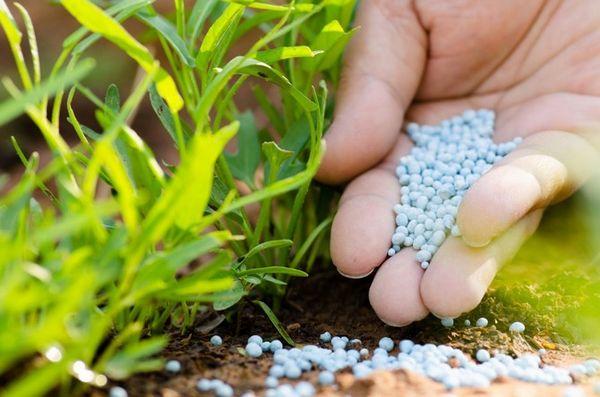

Phosphate fertilizers are sold in the form of superphosphates. Such a preparation is used in an amount of 50 g, diluted with 1 liter of water, and then boiled for half an hour. Water is added to the finished mixture so that it is 10 liters. Superphosphate can be added dry to the fermented manure, keeping the proportion of 50 g per 10 liters of solution.
In winter, one feeding per month will be enough for the culture. In the spring, the frequency of fertilization increases. If a room orange or lemon is kept at a temperature of + 19 ... + 21 ° C, from October to February it must be fertilized once every 2 months. It is recommended to use a commercially available balanced mineral complex.
Many experienced flower growers purchase ready-made complexes of inorganic preparations containing large amounts of phosphorus and potassium in a specialized store. The alternation of root and foliar dressings is effective.
According to the seasonal fertilization table, chemical fertilizers for citrus fruits are applied monthly. In February, it is better to use superphosphate in an amount of 5 g per 1 liter of water; in March, you will need a ready-made complex of minerals and trace elements (the dosage is indicated in the instructions). In April, superphosphate and a ready-made mineral complex with a high content of trace elements are introduced. In May, an exotic guest requires the use of superphosphate (5 g per 1 liter of water) and urea (1.5 g for the same amount).
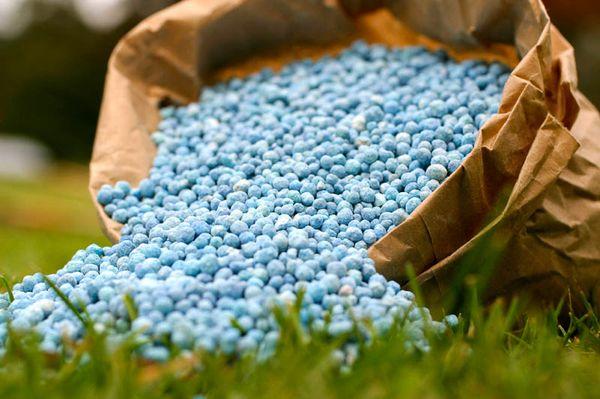

In June-July, urea and a mineral preparation with trace elements are used. In August - the same complex and potassium permanganate (0.2 g per 1 liter of water). In September, you will need superphosphate (5 g per 1 liter) and potassium sulfate (3 g per 1 liter). In October, it is advised to carry out foliar feeding with a mineral complex with trace elements (as in December). In November, you need to fertilize the ground with the same preparation, only the top dressing will be root (as in January).
Folk recipes
Amateur flower growers often use kitchen waste to fertilize citrus fruits. Lemon responds well to watering the meat in it. As an organic top dressing, it is recommended to use vegetable and fish broths rich in phosphorus and other elements. For the same purpose, tea leaves or crushed quinoa, rich in nitrogen, can be deepened into the topsoil.
Such agents are relatively harmless to plants and usually do not cause "side effects". But with pronounced signs of mineral starvation, you should use synthetic drugs.
How to understand what is missing?
Sometimes it also happens that all the necessary conditions for the growth of indoor lemon have been created, additional nutrition is brought in on time, but still it does not grow, the leaves fall off and other unpleasant things happen. Perhaps this means that the citrus is missing some elements. And it is not at all necessary to carry out experiments on a green pet, changing the fertilizer and its amount, by the appearance of the lemon it is quite possible to determine what exactly it needs. Accordingly, all that remains is to increase the dosage of this substance, and the tree will look great again.
Secrets of growing exotic citrus trees
If you notice negative changes on the lemon in time, you can take the necessary measures and prevent disease and death of the plant. In general, if the frequency and dosage of fertilizer are strictly observed, then such problems should not arise.
Unusual feeding
Some growers use folk remedies for citrus fruits with great success. The most popular are the following.
- Herbal infusion. You can prepare such a top dressing from the weeds growing in your garden. Weed grass, like useful vegetation, absorbs nutrients and is of great value to plants. For feeding lemon and tangerine, it is recommended to use nettle infusion. 100 g of crushed raw materials from leaves and shoots are poured with water. Leave to ferment for 10 days. Then it is filtered and brought to a volume of 3 liters with water. Used for irrigation of the crown and watering at the root.
- Blood water. For cooking, use fresh blood diluted with water, or water after washing meat, fish. It is important that the blood rinsed food is fresh. The blood contains the entire complex of minerals and nutrients that citrus needs for full growth and development.
Features of feeding citrus fruits
In the summer, plants are especially in need of care. Fertilization at this time is necessary with mixtures:
- potassium and nitrogen every 10 days;
- superphosphate and slurry 4-5 days after nitrogen-potassium solutions, but 1-2 times every month;
- slurry 1-2 times every month.
In winter, citrus fruits are practically not fertilized, it is possible 1-2 times a month. Some do soil fertilization in the fall, but not in the winter. Closer to spring (early days of March), an increase in the standardized dose of fertilizer for a tree begins.
Fertilizers at home should always be applied to wet soil and preferably in liquid form; it is recommended to take a short break between waterings. Evidence that the soil is already sufficiently saturated is fluid leaking out of the hole in the bottom of the pot.
To increase the amount of trace elements in the soil, many gardeners and hobbyists use proven methods of care. For example, lemons are poured with tea leaves, and in order to set the fruits, during flowering they are fertilized with castor oil at the rate of 1 tbsp. spoon for 1 liter of water.
Unconventional methods are often used to increase the amount of iron in the soil. Some gardeners dust the soil with rust from old metal products or bury the iron in the soil. Others, on the contrary, immediately plant citrus fruits in old metal dishes, such as old buckets, cans, pots, and so on. Even small amounts of bone meal are used, added to the soil 1-2 times a season.
To increase the growth of trees and fight worms, potassium permanganate is used.
A solution of potassium permanganate not only nourishes the lemon, but also disinfects the soil.
It should be remembered that an excess of the substance can lead to burns and death of the tree. At home, you can prepare such a solution yourself. To do this, potassium crystals (5-6 grains the size of millet) are added to a liter of water, everything is well mixed and a 0.012% solution is ready for use. If this substance is in powder form, then it is necessary to mix 12-13 stuck together grains with a liter of water. In this case, the solution becomes light red.
Such funds are used mainly for plants planted in a vegetable garden or front garden. When using top dressing for indoor citrus fruits, the resulting solution is further diluted with liquid by half. Watering is carried out in the evening no more than 1 time per month.
Lemon is one of the most common indoor citrus fruits. Growing a fruiting lemon tree is the dream of many flower growers. It is not a problem to acquire a small seedling of this culture, but it is much more difficult to grow a fully developed plant from it. An important role in this is played by timely and correct feeding.
Folk remedies for feeding
In case there is no way to purchase ready-made dressings, or for some reason there is no desire to use them, you can use folk remedies. Such mixtures and substances have been used for many decades, and will help create suitable conditions for lemons at home for development.
How to improve yields?
We are constantly receiving letters in which amateur gardeners are worried that due to the cold summer this year there is a poor harvest of potatoes, tomatoes, cucumbers, and other vegetables. Last year we published TIPS on this matter. But unfortunately, many did not listen, but some still applied. Here is a report from our reader, we want to advise plant growth biostimulants that will help increase the yield up to 50-70%.Read ...
The best "food" for citrus fruits
There are several more interesting options for how to feed a lemon at home: pour it with diluted milk, bury the head of a fish (fresh) in the ground, insist a banana peel in water, use water after washing the meat, and the like. But such fertilizer should be used with extreme caution, since organic matter can rot. And this threatens not only with an unpleasant smell, but also with the appearance of midges and even the death of the plant. The above methods of feeding lemons will be quite enough to make up for the lack of some trace elements.
As for the frequency of citrus replenishment, it is recommended to carry it out from early spring to mid-autumn once every three weeks. Additionally, fertilizer can be applied after transplanting or after rooting a young sprout. For the winter, feeding should be stopped, the plant is at a dormant stage and it does not need additional nutrition as much as during active growth.
Methods for introducing useful components
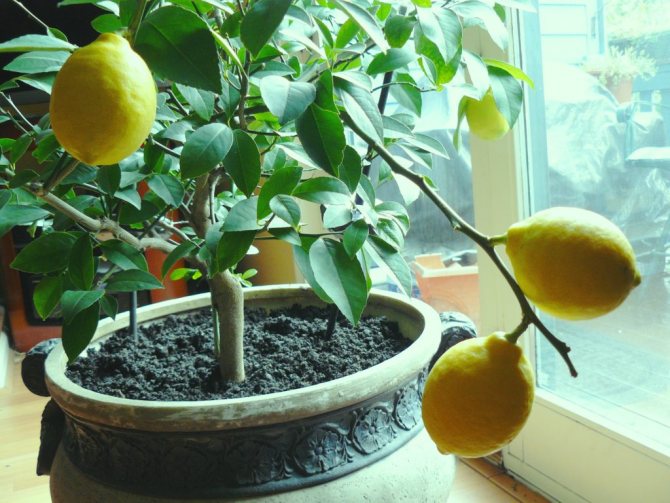

Fertilizers are applied to indoor citrus fruits in the same way as garden oranges and lemons are fertilized. However, it should be borne in mind that the root system of a plant planted in a pot will be less developed compared to garden citrus crops. Complementary foods should be introduced in small portions with a short break. Fertilization rates for each lemon variety will be different, and this should be discussed with a nursery representative at the stage of buying a bush. The individual characteristics of a young plant are also taken into account, which should not be overfed. Overfeeding leads to a lack of flowering.
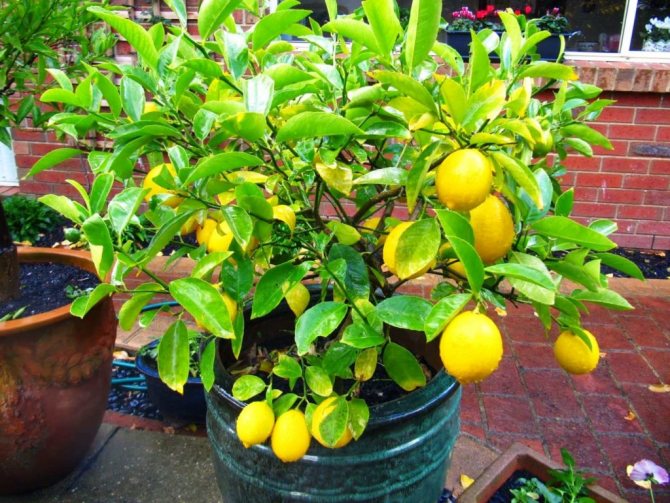

For a lemon grown at home, dressings are made as follows:
- Complex formulations are used only in September.
- Slurry is introduced with the onset of August, in the amount of 100 g, as well as a small amount of manganese and the composition that was introduced during June.
- Superphosphates are used, as well as complexes that have been used over the past two months.
- The need for nitrogenous fertilizers decreases in May, so urea is preferred. It is possible to use compositions based on copper, magnesium, boron.
- Potassium sulphate and complexes introduced in March.
- Slurry is introduced in March in combination with superphosphates.
Root feeding is carried out throughout the fall, summer and spring, when the plant receives nutrients through the root system. In winter, fertilize lemon once a month, foliar method. In winter, foliage needs regular processing through a composition based on potassium permanganate. It should be noted that such manipulations are carried out only in the evening, when the sun's rays have gone beyond the horizon.
Regular spraying of the lemon crown will bring no less benefit than fertilization. During the month, spraying is carried out once, in the process of introducing the next portion of root dressings. The use of such drugs is possible:
| Zinc oxide - 6g / l | Magnesium sulfate - 10g / l | Boric acid - 200 mg / l |
| Potassium permanganate - 250 mg / l | Copper sulfate - 250mg / l | Iron vitriol - 3mg / l |
Essential vitamins and minerals
For proper growth and ensuring the full development of exotic indoor plants, substances such as potassium, phosphorus, nitrogen are required. Also, you cannot do without iron, magnesium, calcium, sulfur and a number of other elements.
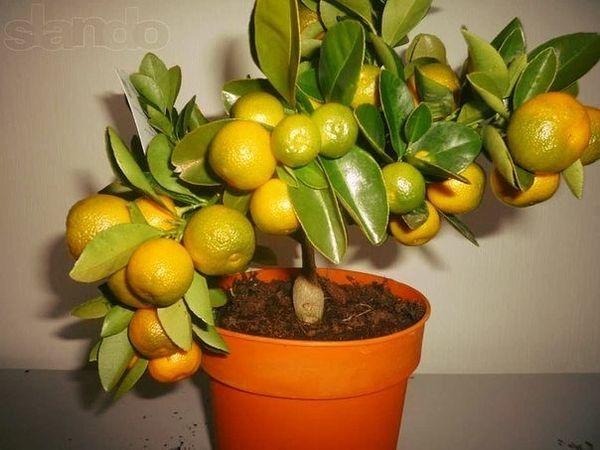

Their deficiency can lead to problems when growing citrus crops. This is a change in the color of the foliage to light green with further yellowing, as well as a decrease in the size of the fruit (if there is little nitrogen). When there is not enough phosphorus, the plant signals a tarnishing of the foliage surface and a hardening of the fruit rind. If in citrus fruits at home, the leaves begin to increase in size, and irregularities are visible on them, then there are problems with the presence of potassium.
With insufficient watering, unpleasant sticky dew appears on the surface of the leaves. When there is an iron deficiency, the plant develops chlorosis, the signs of which are faded and yellowed leaf plates, drying out of the top of the culture.
In order for your favorite plants to receive the above elements, as well as copper, zinc, boron and others, it is necessary to feed citrus fruits growing at home with natural and purchased fertilizers.
Natural fertilizer
One of the best organic fertilizers is slurry. To obtain it, the material filled with water must wander for 5 to 10 days.Before use, the cow concentrate is diluted with water in a ratio of 1: 10/15, and the bird concentrate - 1: 15/20. During fermentation, superphosphate is added to the slurry at the rate of 3 g of the product per 1 liter of liquid. It is good to add 2 g of superphosphate and potassium salt to bird droppings. The slurry helps to speed up plant growth, promotes an active growing season and increases yields.
Ash, weeds, tea leaves and coffee grounds, sugar, egg shells and even aquarium water are used as natural fertilizers for indoor citrus fruits.
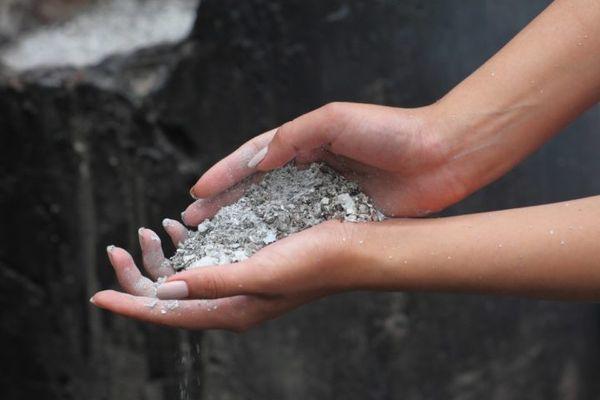

Ash before use is diluted in 1 tsp. water. Leaves of quinoa weed should be ground and added to the ground. The used tea leaves or coffee grounds are pre-dried. Sugar is effective for weakened crops in the process of active growth and development. It is used once a week: sprinkle 1 tsp. on the ground or dissolve this amount in 1 glass of water. The prepared solution is poured over a lemon or orange. The egg shell must be crushed and sprinkled on the ground near the tree. For watering, the crushed material is infused in boiled water for 3 days.
It is also good to water citrus fruits under the root with water from an aquarium.
Home fertilizers
Fertilizers for citrus crops can be prepared independently at home. The following affordable recipes are popular among flower growers:
- Coffee grounds contain large amounts of magnesium, potassium and nitrogen. Before adding it to the soil substrate, the drunk coffee must be dried, otherwise it will become moldy and can attract midges. A teaspoon of make-up is enough for one pot.
- Tea brewing will enrich the soil substrate with magnesium, phosphorus, calcium, copper, iron, manganese and other useful substances. In dried form, the tea leaves are added to the pot with the plant. This product does not contain the amount of minerals and trace elements that citrus needs, so it can only be used as an additional nourishment.
- Sugar is suitable for fertilizing citrus fruits. It is necessary to introduce glucose in the form of a sweet syrup at the stage of active plant growth. Sugar can be added no more than once every two weeks in two ways - either sprinkle a teaspoon of granulated sugar on the surface of the soil before watering, or dissolve the same amount of sugar in a glass of water and water the culture.
Tip for flower growers: If you have a fish tank in your home, use the water from it to water oranges, tangerines and lemons. It is a rich source of vermicompost useful for plants. Care is very simple - just scoop up water from the aquarium and pour citrus over it.
Fertilization rules
When applying fertilizer, it is important to remember the following rules:
- Top dressing can be applied immediately after a few good leaves have appeared on the plant. Important! Up to this point, it is not recommended to make any top dressing, as they will cause more damage than good.
- You cannot apply too much fertilizer, this will create a destructive load on the root system and the plant will soon die.
- Watering and feeding the lemon should be done often, but not abundantly. Too much care in these matters will again lead to an overload of the root system, due to which the plant may die.
- The optimal feeding scheme during the fruiting period: once in an interval of 2 weeks. Important! At other times, top dressing should be applied only once a month. More feeding will negatively affect the plant.
How nutrient deficiencies affect plants
- The lack of nitrogenous substances can manifest itself in the harvest, the size of the fruit and the leaves of the lemon, which turn light green and then turn yellow.
- The lack of a sufficient amount of phosphorus trace elements contributes to the disruption of nitrogen nutrition and metabolism in general, the fruits become dense, and the leaves become dull.
- With a lack of potassium, lemon leaves grow significantly, their surface becomes uneven, and if there is a lot of moisture, then sticky dew appears.
- The low content of iron in the soil contributes to the development of chlorosis. There are signs such as pale or yellow leaf plates, light fruits that fall off over time, drying of the upper part of the plant.
- If there is not enough potassium, then citrus fruits grow poorly, have a weak appearance, spots form on the leaves, the growth of young shoots stops.
- The absence of magnesium, copper, zinc, boron and other elements also negatively affects the development and fruiting.
How to identify nutritional deficiencies
The appearance of the plant and its general condition will help you determine which micronutrient deficiency your citrus plant is suffering from.
- With a lack of nitrogen, the leaves become covered with yellow spots, become pale. Young foliage and shoots are shortened. Nitrogen deficiency leads to the development of chlorosis in homemade lemons.
- In a plant that suffers from a lack of phosphorus, the leaves fade, sometimes turn yellow. Such a tree blooms poorly and gives a poor harvest. Its fruit tastes sour, has an irregular shape and wrinkled skin.
- With a lack of potassium, the leaves roll up at the edges, brighten, then turn brown. The plant stops growth and development. Adult shoots die off. Crohn becomes slightly leafy. During the flowering period, the leaves fall off en masse, the fruits ripen sour.
- The lack of magnesium will be indicated by unhealthy leaves, on the edges of which yellow spots have formed. Sometimes the yellowness spreads throughout the leaf.
- If the leaves become smaller, dark green veins appear on them against the background of the pale color of the leaf plate, then the citrus suffers from a lack of zinc. Short internodes are noted on the shoots. The fruits ripen small and sour.
- The leaves curl, change their rich dark green color to light green - the plant suffers from a lack of boron. Also, brown spots on the fruits and hard clots of resinous gum will testify to this.
- The constant wilting of foliage on the apical shoots is a sign of copper deficiency. The leaves are irregular in shape, become unnaturally large, and dark streaks appear. Smears of resinous gum form on the peel and pulp of the fruit.
Organic fertilizers
An indoor lemon tree should be periodically fed with organic fertilizers. This can be bird droppings (chicken or pigeon), slurry or humus. Through dilution with water and long-term settling, it is necessary to achieve a low concentration of manure so as not to harm or injure the plant.
Fertilization of lemons can be carried out during the blooming and flowering period, however, it is necessary to adhere to the recommendations of more experienced growers regarding the amount and frequency of feeding.
Timing and frequency of feeding
In the first half of summer, fertilizing is applied in order to increase the sugar content of the fruits, to reduce their bitter taste, which is characteristic of citruses during indoor cultivation.
Please note: The longer the plant is in one container without transplanting and the older its age, the more it needs feeding.
Fertilization rules:
- Top dressing should be applied with water.
- Only absolutely healthy specimens can be fertilized. If the plant is sick, the introduction of organic and mineral substances into the soil will weaken the already low immunity of the citrus crop.
- In winter, top dressing can be applied no more than once a month.
- When a crop is transplanted into a new land in spring, after a month and a half, minerals for flowering plants can be added to the soil.
- If citrus fruits do not bloom, top dressing should be started by introducing organic matter into the soil three times in a row with an interval of two weeks.For this purpose, flower growers use horse manure extract, well-rotted humus, ready-made vermicompost.
- It is important not to oversaturate the substrate with minerals and organics, since excess nutrients can affect the acidity of the soil.
Plants require special care in the summer. The following fertilizers should be used to feed citrus crops:
- nitrogen and potassium - once every 10 days;
- slurry and superphosphate - every four days immediately after applying nitrogen-potassium fertilizers.
In the winter season, citrus crops practically do not need replenishment. To maintain minerals and trace elements in the soil, they can be applied once every two months in a minimum amount. At the beginning of March, the usual fertilization rate can be gradually increased.
Experienced flower growers recommend adding fertilizer to moist soil in a liquid state. In no case should organic and mineral fertilizers be simultaneously applied to the soil substrate, they will burn the roots. The only exceptions are ready-made formulations that combine acceptable substances.
And a little about the secrets of the Author
Have you ever experienced unbearable joint pain? And you know firsthand what it is:
- inability to move easily and comfortably;
- discomfort when going up and down stairs;
- unpleasant crunching, clicking not on their own;
- pain during or after exercise;
- joint inflammation and swelling;
- unreasonable and sometimes unbearable aching pain in the joints ...
Now answer the question: does this suit you? How can you endure such pain? And how much money have you already "poured" on ineffective treatment? That's right - it's time to end it! Do you agree? That is why we decided to publish an exclusive interview with Oleg Gazmanov, in which he revealed the secrets of getting rid of joint pain, arthritis and arthrosis.
Attention, only TODAY!
Citrus Nutrition Scheme
You should adhere to the natural conditions of the lemon tree - in nutrition and care. For wintering, you can choose a cool mode with a temperature of 5 - 10 degrees and partial blackout. You can provide the plant with a warm room where the temperature will be around 15 degrees.
It is important that the temperature of the earthy coma and the air coincide so that the plant does not shed its foliage. During warm wintering, it is impossible to arrange darkening, since the roots consume food, and photosynthesis is slowed down. On the contrary, during cold wintering, you should not give a lot of light, because the roots cannot provide food for the leaves, and they will crumble.
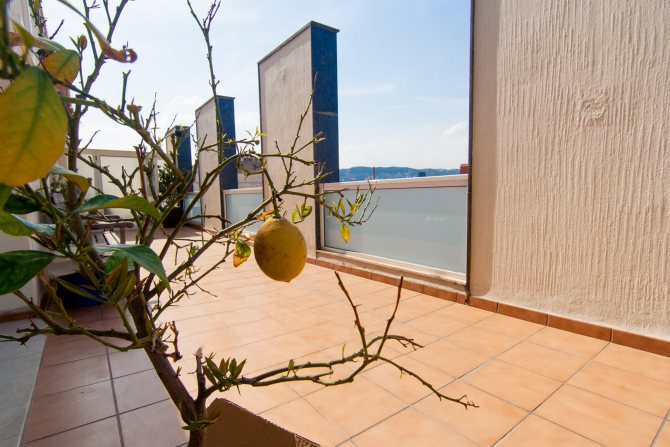

You need to start making food from the end of February... If the plant wintered in the cold, then you can start watering it with warm water, then transfer it to a warm place and give a nitrogen or complex solution. Then feed a little every week.
Description
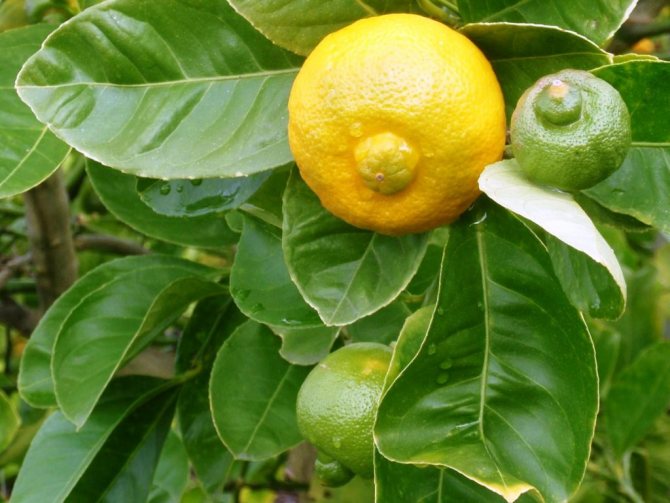

Lemon is a perennial shrub that can grow up to 2 meters. Throughout the year, the foliage does not fall off the tree. The branches of the plant are protected by thorns and covered with oval-shaped leaves, rich in useful essential oils. The tips of the leaves are pointed. Fragrant inflorescences consist of five leaves and stay on the trunk of the plant for 8 weeks. Flowering occurs 2-4 times throughout the year, depending on the cultivated variety. The diameter of the flower reaches 9 cm, the peel smells, slightly pitted and lumpy. Lemon can grow at home for 30 years or more while maintaining an optimal microclimate. In this case, the tree will delight with fragrant fruits regularly.
Varieties
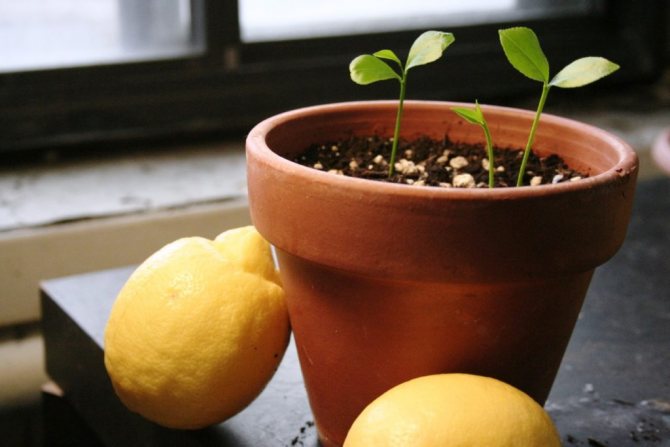

There are several varieties of lemon that can be grown at home. Among the most sought after are pink lemon, Japanese, Mayer's.
| Name | Description |
| Pink | The bush is incredibly prolific, grows quickly and is studded with thorns. The foliage is variegated, the inflorescences are purple. The peel of the fruit is dense.The fruit is medium in size and incredibly sour. The surface has a characteristic striped color. At first, the fruits are green, but turn yellow as they ripen. A characteristic feature of the variety is the pink pulp. In industry, the fruit is used to make pink lemonade. |
| Japanese | The small bush is completely covered with sharp thorns. The foliage is leathery. The inflorescences have a wonderful citrus aroma with light coniferous and floral notes. Fruit weight 60 g. The surface is rough, sour taste. |
| Mayer | The variety was bred by breeders by crossing a lemon and an orange. The height of the bush reaches 90 cm. The foliage is serrated, leathery, ovoid. Inflorescences are white and fragrant, will appear in the second year of the bush's life. The first time you can contemplate no more than 5 flowers. If the ovary is formed in the first year of the life of the bush, it should be completely cut off. Fruits are round in shape, no larger than a chicken egg. The taste is especially sour. |
| Novogruzinsky | The variety belongs to the category of remontants. Flowering and subsequent fruiting begins only at the 5th year of the life of the bush. The bush grows sprawling and incredibly prickly. The foliage is elongated, light green in color. The smell of the fruit is delicate and refined, the weight is 100 g |
| Ponderosa | Also called Canadian Lemon. The height of the plant is 90 cm. The foliage is large and oval, dark in color. The surface is leathery but smooth. Cream-colored inflorescences can appear in the first year of a lemon's life. They grow in the form of inflorescences. Out of 15 flowers, ovary will appear only in 5. The weight of the fruits will be 300-800 g. The taste is pronounced, sour. It is not afraid of overdried air, it is unpretentious in leaving. |
External defects of lemon: what problems are they talking about
The plant signals the deficiency of a certain element by external manifestations. We need to understand what the citrus is missing and replenish in time. Timely measures taken will save you from serious future problems.
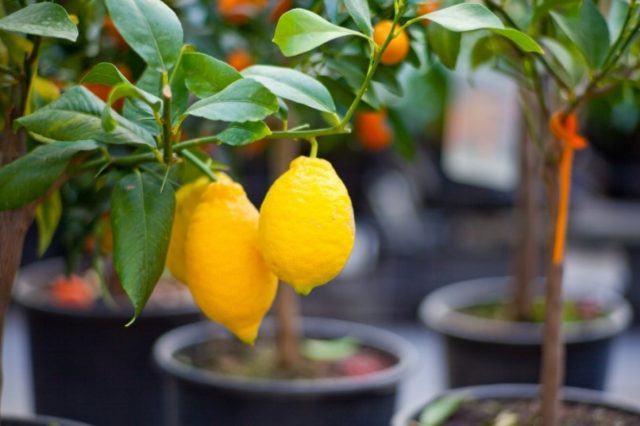

A weakened lemon tree is more susceptible to disease and scab attacks.
| Deficiency of an element | External manifestations |
| Nitrogen starvation | General depression. Less intense color of foliage, low yield and small fruits. |
| Lack of phosphorus | Missing ovary or flowers do not produce fruit. The leaves turn black and fall off. |
| Lack of calcium | The root develops poorly and the tree's nutrition is disturbed. Shoots die off. The leaves curl and fall down. |
| Lack of potassium | Weakens the tree completely. Faded leaves that are crumbling. The fruits are small and take a long time to ripen. |
| Lack of iron | Leaves turn yellow, fruits fall off, shoots turn black and die off. |
| Lack of copper | Without color change, the tips of the shoots die off. |
At different times of the year
If you fertilize a lemon tree with liquid formulations in overdried soil, then there is a great risk of burning the root system of the plant. And to enhance immunity, it is recommended to process with a weak solution of potassium permanganate.
In the spring, immediately after coming out of dormancy, citrus needs a powerful replenishment of nitrogen-containing compounds. You can feed it with urea: a small spoonful of urea is enough for a liter of water. Water the tree until the composition begins to penetrate into the lowest layers and seep from the pallet.
Ferrous oxide serves as an excellent top dressing in spring. It is mixed with soil.
Important! Nitrous should not be confused with oxide. The lemon tree does not tolerate the latter (rust).
In the summer, when an active period of development begins, a vigorous flowering, the plant needs complex compositions. Phosphorus is especially needed. From folk remedies, you can use fish broth or a fresh solution of fish powder.
In the autumn, when there is a rapid process of preparation for a state of rest, lemon can be watered with strongly brewed tea. Do this no more than 3 times every 7 days.
In winter, at low temperatures, the lemon is dormant.No feeding is required during this period.

